GRASSES
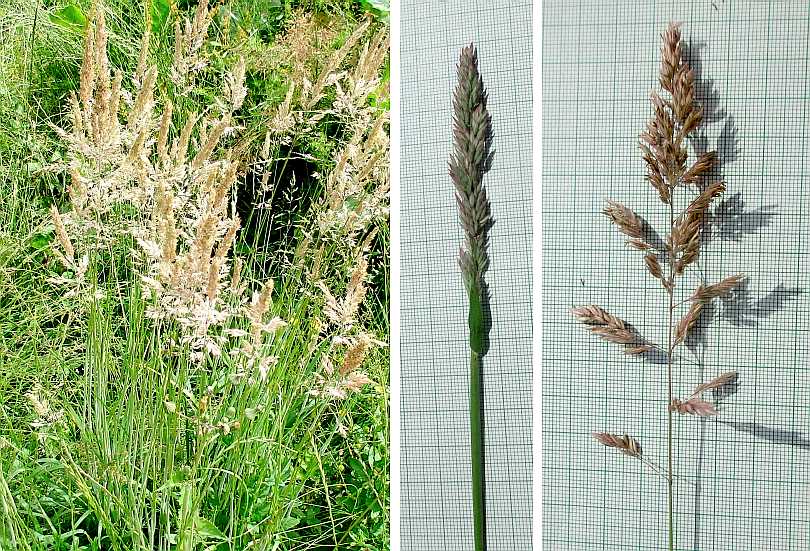 As the left-hand picture shows, it is virtually impossible to photograph individual grass flowers where they are growing: their shapes simply don't stand out against the background of their mates. So instead individual flower heads are shown resting on a sheet of squared paper: the 'big' squares are centimetres, the smallest ones millimetres.
As the left-hand picture shows, it is virtually impossible to photograph individual grass flowers where they are growing: their shapes simply don't stand out against the background of their mates. So instead individual flower heads are shown resting on a sheet of squared paper: the 'big' squares are centimetres, the smallest ones millimetres.With every type of grass the flowerhead emerges from a tubular sheath so it first appears as a compact, thin upright as in the middle picture. But many then open out like miniature Christmas trees or weeping willows. This particular grass, photographed in June, is -
YORKSHIRE FOG
Holcus lanatus
It is an unusually soft and minutely hairy species, and so is not particularly liked by livestock: that may be why it tends to form clumps like that in the first picture. Some specimens may be almost mauve in colour.
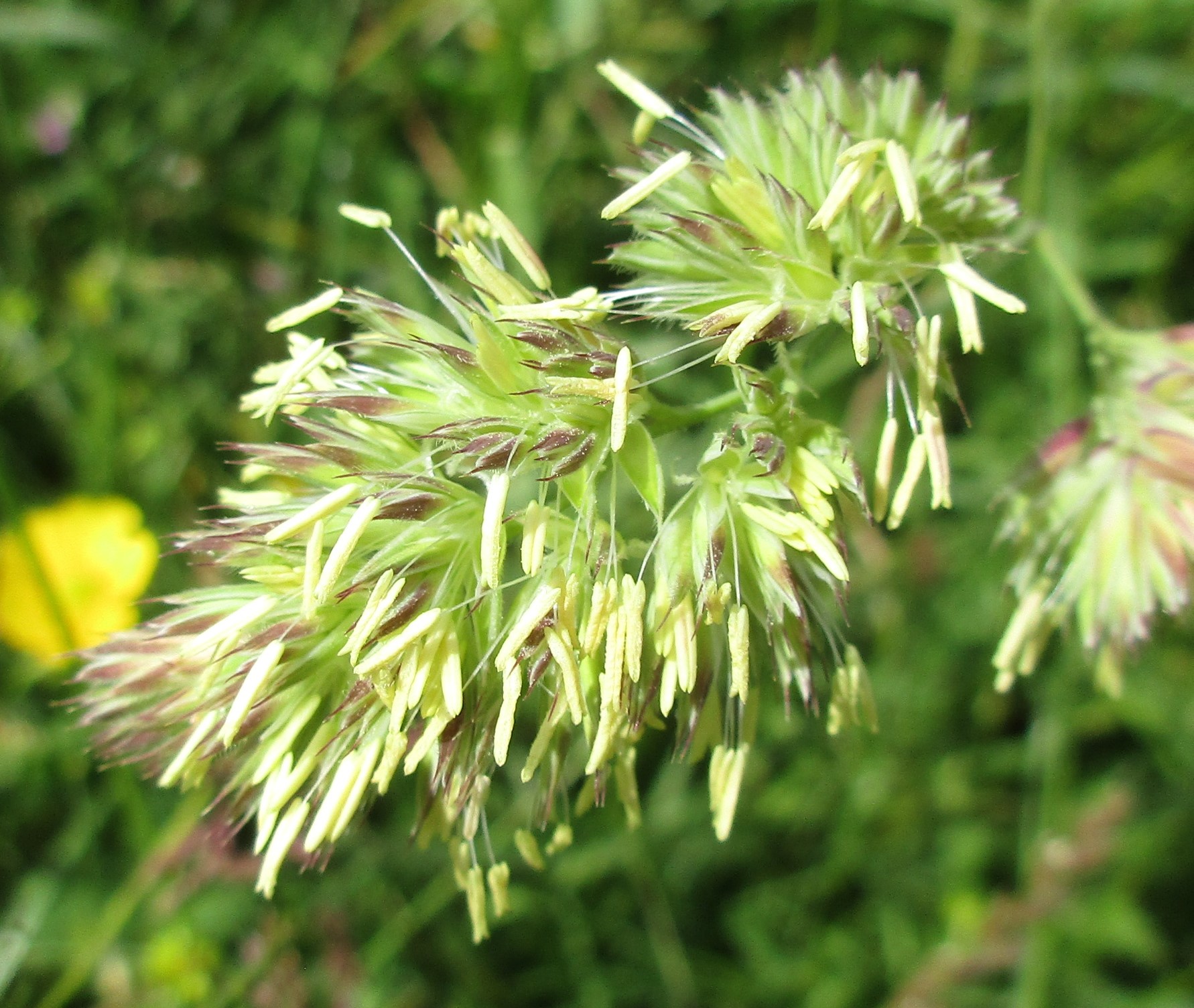
So grass flowerhead identification is possible only when fully emerged. Size depends on circumstances: a grass reaching up to the light on the edge of a wood may be five or more feet tall while its compatriot on a well-trodden or grazed area may manage only a few inches. Again, colours are variable, with many different greens, browns and reds in vogue. All grasses are both male pollen-producers and female seed-producers: shape and colour can change depending on whether or not the pollen sacs - 'anthers' - are on display as with the close-up of cocksfoot grass in the picture on the right. So the one and only way to recognise grasses is by the patterns of their structures.
GRASSES PHOTOGRAPHED IN MAY

• 1: ANNUAL MEADOW GRASS, Poa annua, is an extremely versatile self-seeding annual grass (reputed to be the one and only invading plant established on Antarctica). It is comparatively small but can be found in flower in every month of the year.
• 2: COCKSFOOT, Dactylis glomerata, is a useful, drought-resistant grass though it tends to form heavy clumps which become tough and unpalatable.
• 3: MEADOW FOXTAIL, Alopecurus pratensis, is one of the first grass flowers to emerge in the early summer. The specimen on the left has its pollen sacs deployed so that the wind can carry pollen to neighbouring plants. There is also some variation in sizes.
• 4: PERENNIAL RYEGRASS, Lolium perenne, is a grass among grasses! It is an ideal grazing companion with white clover; is the hard-wearing grass for 'natural' sports turf; and is what you get if you ask for a versatile family lawn.
• 5: SOFT BROME, Bromus mollis, is a common wild annual grass of grasslands, verges and so on.
• 6: BARREN BROME, Bromus sterilis, is an annual grass that is barren in name only. When fully emerged those branches hang down, very decoratively.
• 7: SWEET VERNAL, Anthoxanthum odoratum, usually wins the early race: "vernal" actally means "of the springtime" (as in "vernal equinox"). Farmers and their charges welcome it: though not very productive it makes for "sweet"-smelling hay crops.
GRASSES PHOTOGRAPHED IN JUNE
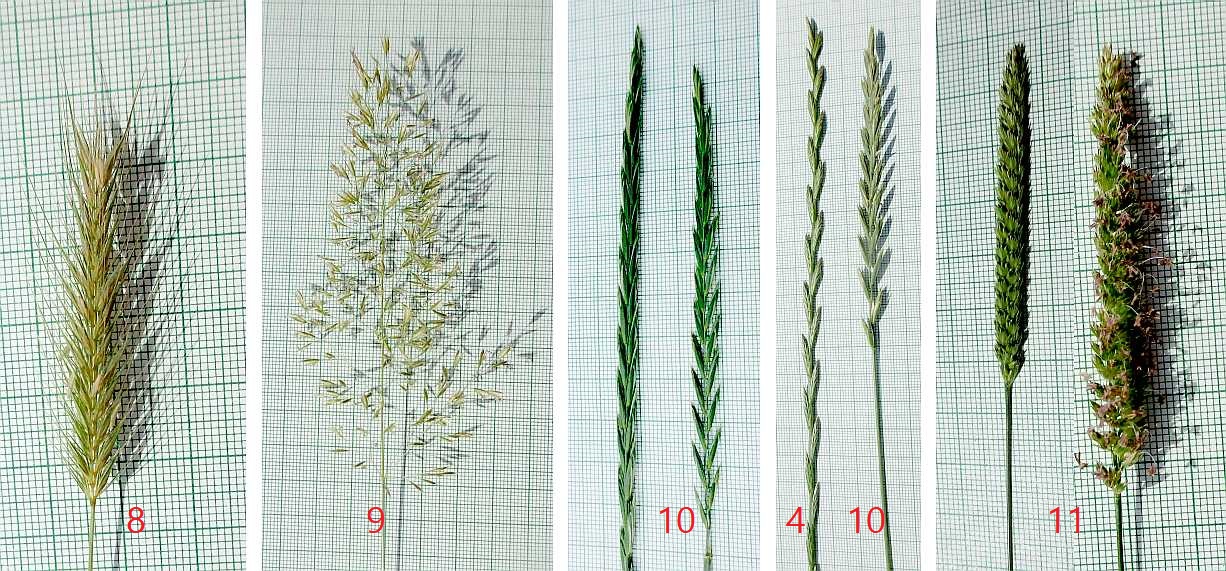
• 8: BARLEY GRASS, Hordeum murinum (possibly H. pratense) is not very productive, but has been known to provide small boys with ammunition darts.
• 9: COMMON BENT, Agrostis vulgaris, as common as its name implies, especially in fairly dry grasslands and wild spaces. The most delicate-looking, airy-fairy grass flowerheads.
• 10: COUCH or TWITCH, Agropyron repens, the old-time gardeners' dreaded weed which spreads by underground stems. But as it can't stand being grazed, it occurs on horse pastures only round the edges.
• 4 & 10 : For comparison, valuable perennial ryegrass on the left has its florets edge-on to its stems, but couch/twitch on the right has its florets pressed flat-ways against the stem.
• 11: CRESTED DOGSTAIL, Cynosurus cristatus, has all its florets on one side of the stem, like a toothbrush. Very compact when it first emerges from its leaf sheath, it opens up to distribute and receive pollen.
GRASSES PHOTOGRAPHED IN JUNE-JULY

• 12: MEADOW FESCUE, Festuca pratensis, a common and agriculturally useful grass. Its florets are in compact, pointed groups, not hairy.
• 13: TALL OAT GRASS, Arrhenatherum elatius, makes a tall summer show on any of the field areas that haven't been heavily grazed. The florets have awns - stiff whiskers.
• 14: YELLOW/GOLDEN OAT GRASS, Trisetum flavescens, is slightly smaller and more 'golden' than the tall oat grass. (It is totally unrelated to the Stipa gigantea sold as 'golden oat grass' in some garden centres.)
• 15 and 16: These two common wayside and field grasses are very similar. The only non-technical way of telling them apart is that if you gently rub the flower stem on your lips the ROUGH STALKED MEADOW GRASS, 15, Poa trivialis, feels very slightly rough whereas the flower stalk of SMOOTH STALKED MEADOW GRASS, 16, Poa pratensis, feels as if it had been varnished.
• 17: WOOD FALSE BROME GRASS, Brachypodium sylvaticum, has the sole skill of being able to thrive in the shade, so it is to be found only beneath the trees along the one-time towpath.
• 18: TIMOTHY, Phleum pratense, may look like a stiffer, less hairy version of meadow foxtail (3 above) but whereas meadow foxtail is one of the earliest spring grasses timothy is one of the last summer ones: they virtually never appear side by side.
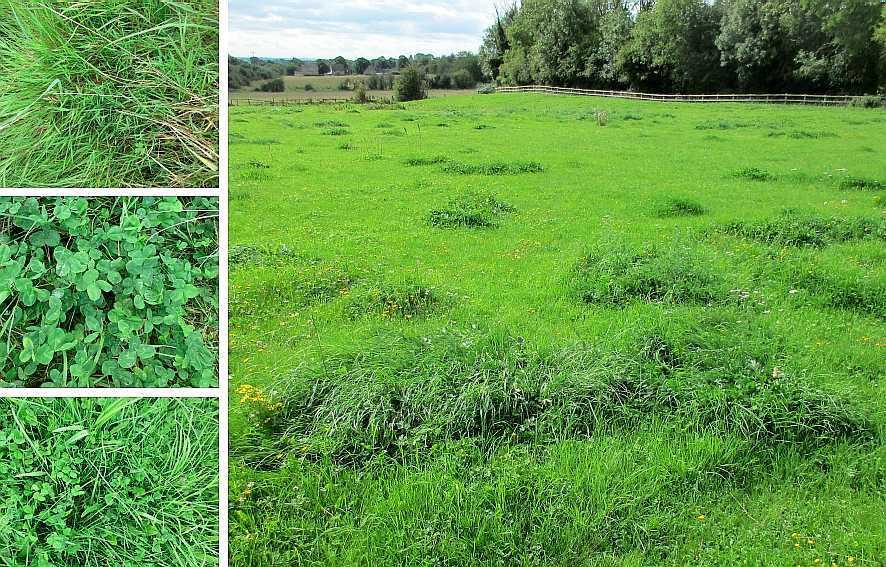 GRASS PASTURES
GRASS PASTURESare rarely uniform. There are likely to be some areas of grass species only. Hopefully, there will be clover patches too. The ideal is a mix of grasses and one or more types of clover since bacteria in clover roots help provide nitrogen food for the whole sward. There may be 'herbs' ('weeds'?) too, such as buttercups, plantains, yarrow, shepherd's purse and many others: they can be beneficial if deep-rooted. Where yet more nitrogen is provided by animal dung or urine the growth is darker in colour and more luxuriant - and possibly less palatable to the animals involved!
Photographed in August.
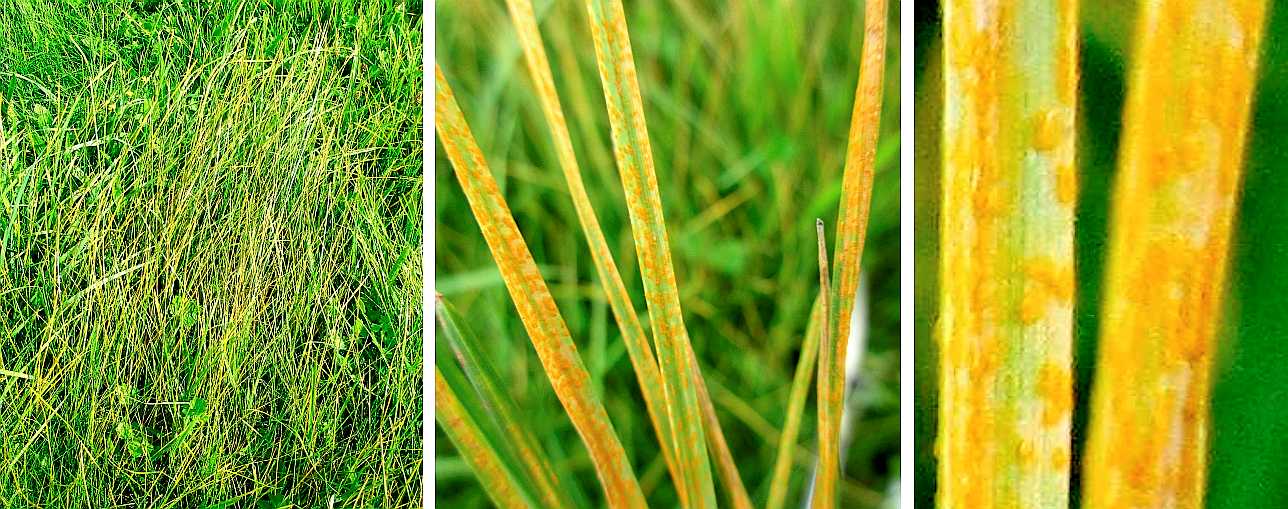 RUST FUNGUS ON GRASS
RUST FUNGUS ON GRASSPuccinia species
Though very rarely catastrophic, even grasses (and clovers) can be attacked by disease organisms, usually fungi. This horse pasture patch, just a few feet across, shows growth of an orange 'rust' fungus on otherwise healthy leaf blades.
Photographed in August.
 SNOWDROPS
SNOWDROPS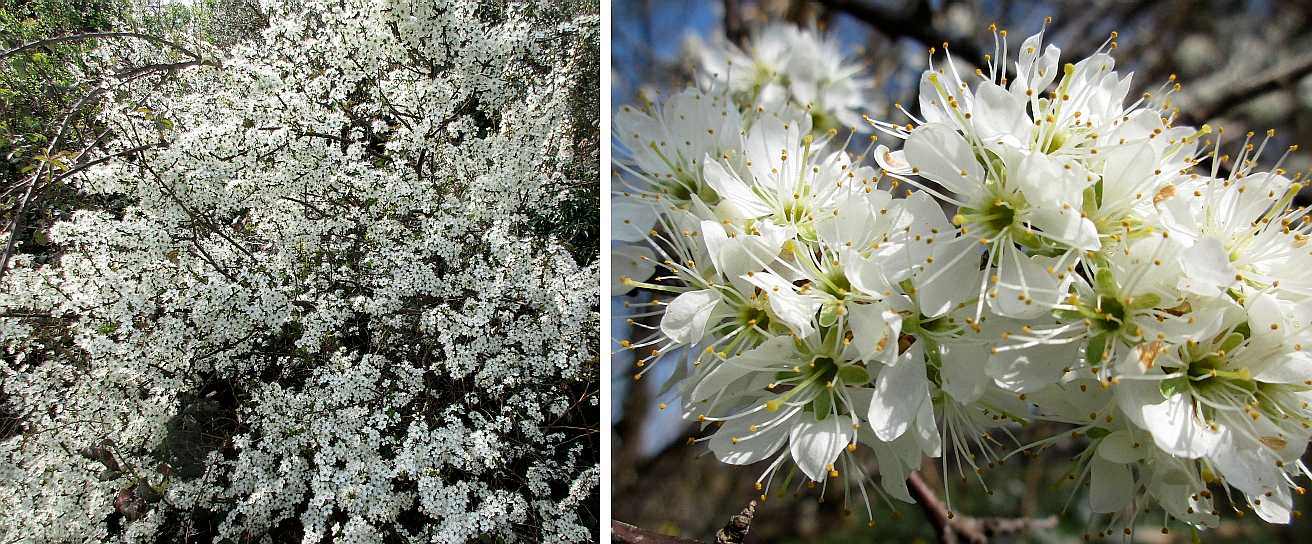 BLACKTHORN
BLACKTHORN SWEET VIOLET
SWEET VIOLET GARLIC MUSTARD
GARLIC MUSTARD CHERRY LAUREL
CHERRY LAUREL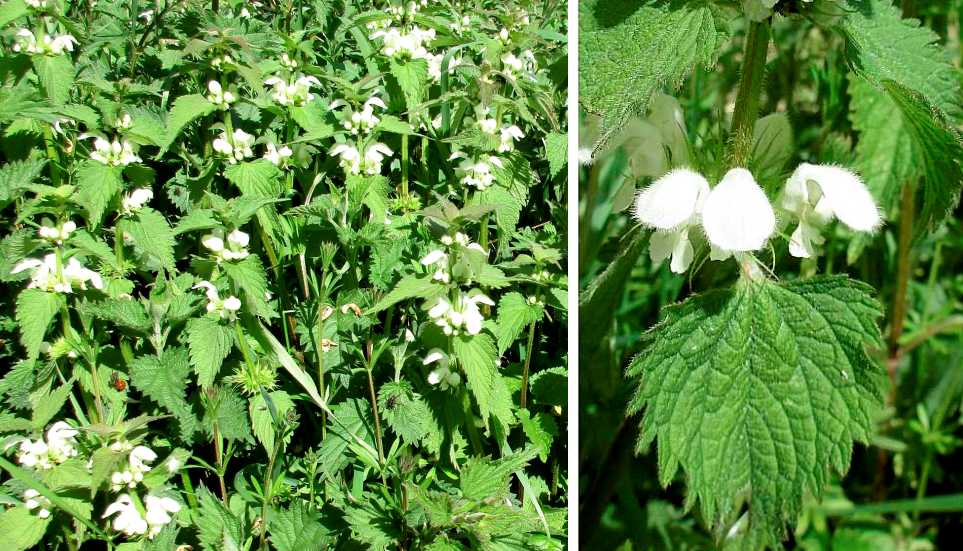 WHITE DEADNETTLE
WHITE DEADNETTLE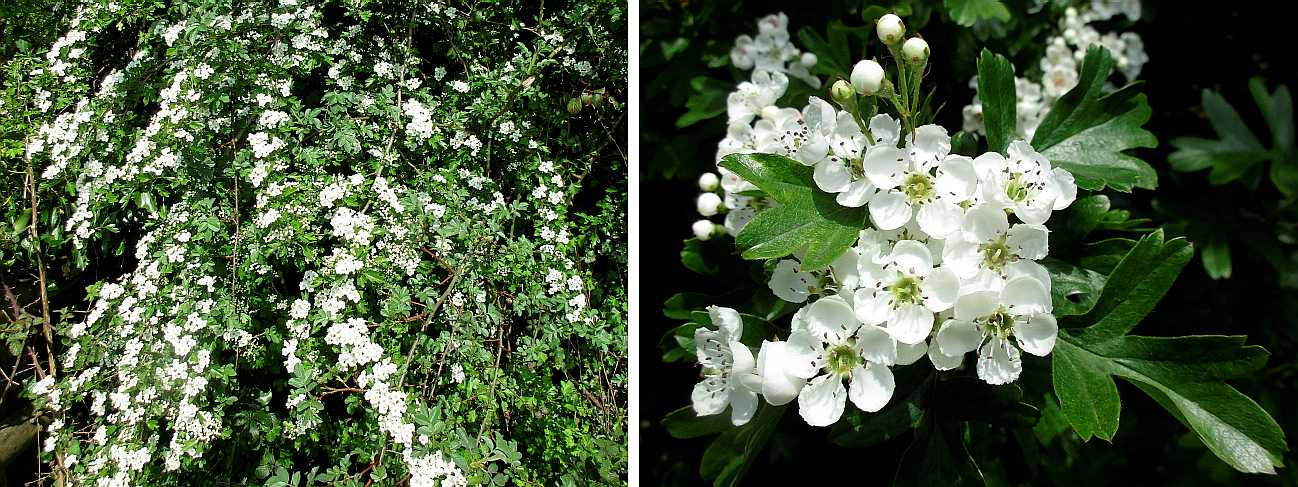 HAWTHORN
HAWTHORN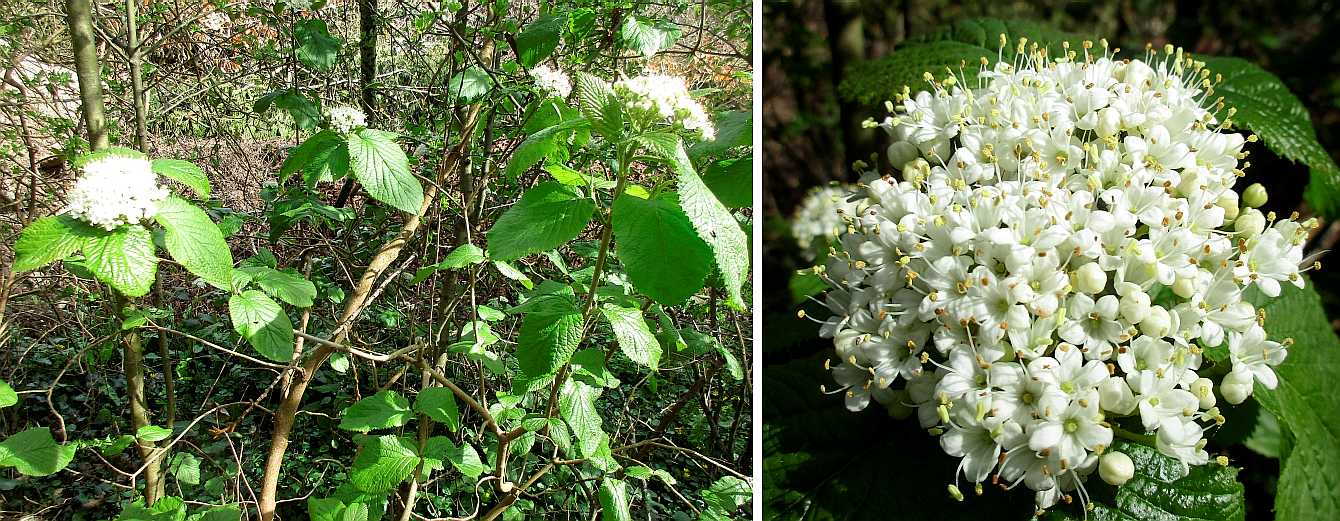 WAYFARING TREE
WAYFARING TREE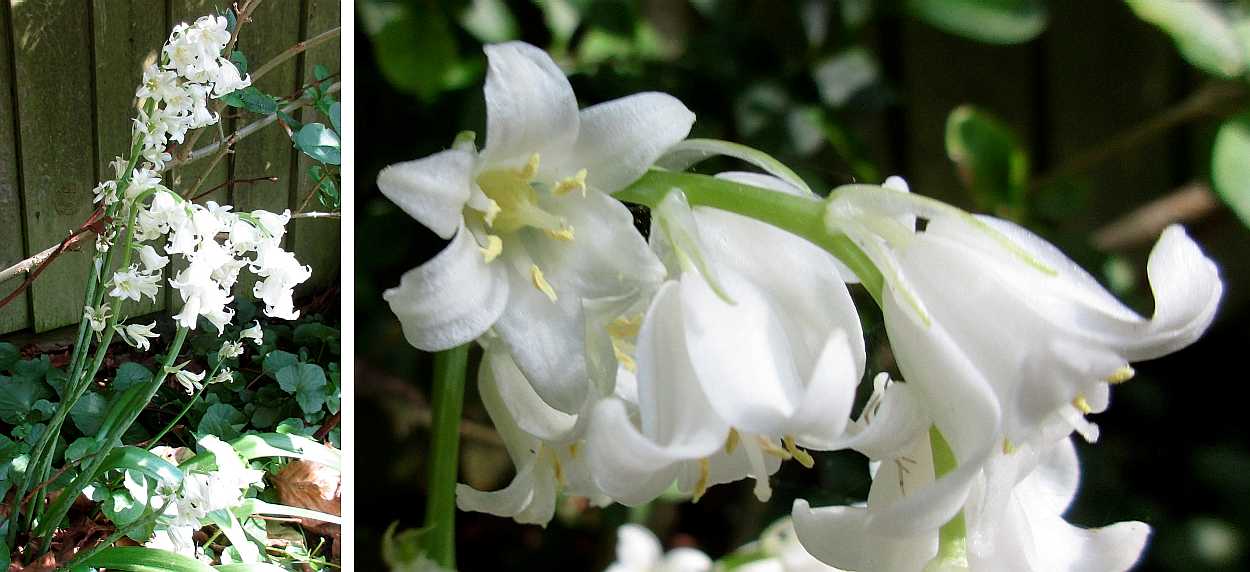 WHITE BLUEBELL
WHITE BLUEBELL COW PARSLEY
COW PARSLEY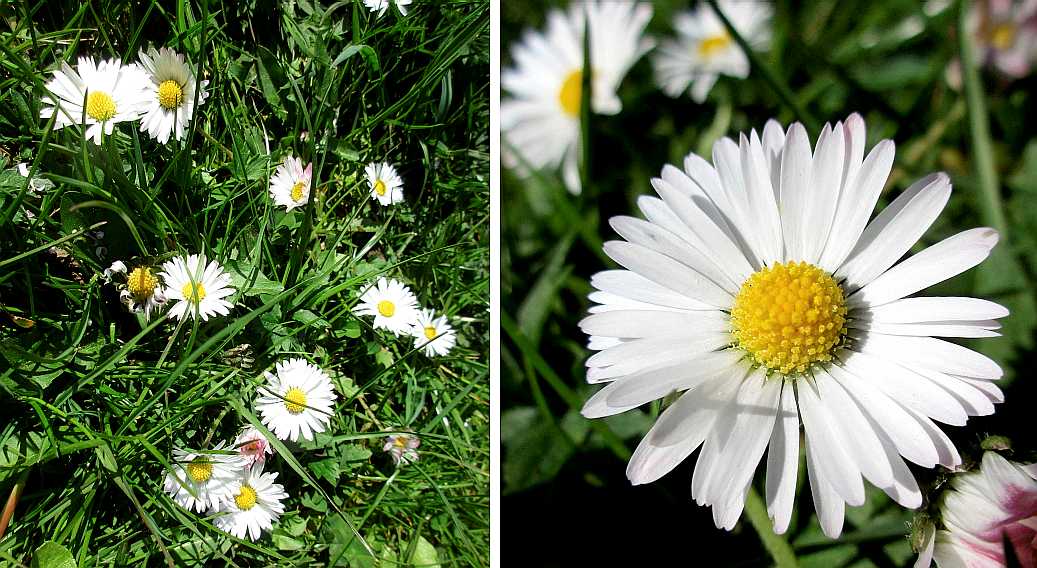 DAISY
DAISY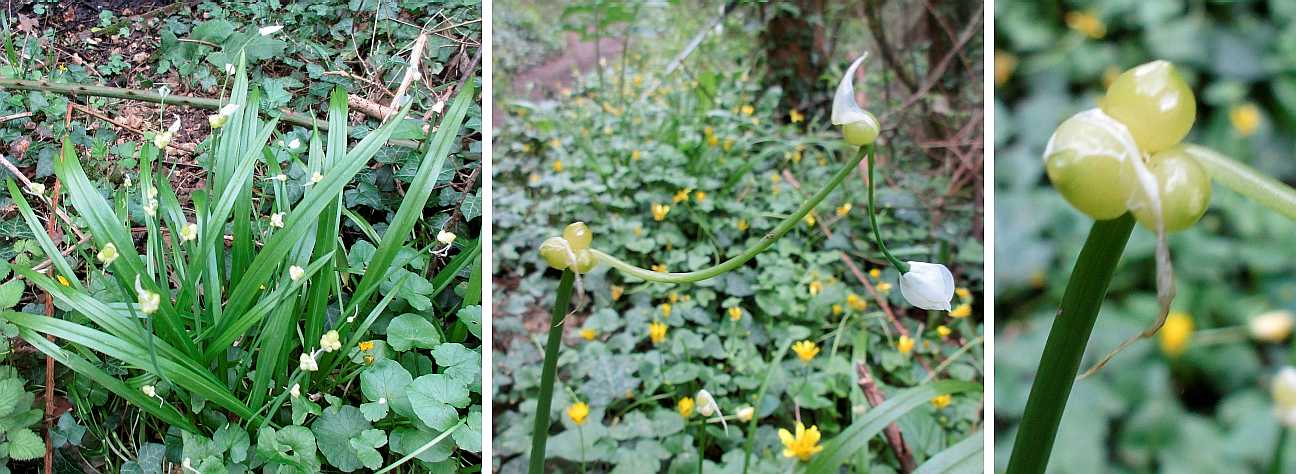 TRIANGULAR-STALKED or THREE-CORNERED GARLIC
TRIANGULAR-STALKED or THREE-CORNERED GARLIC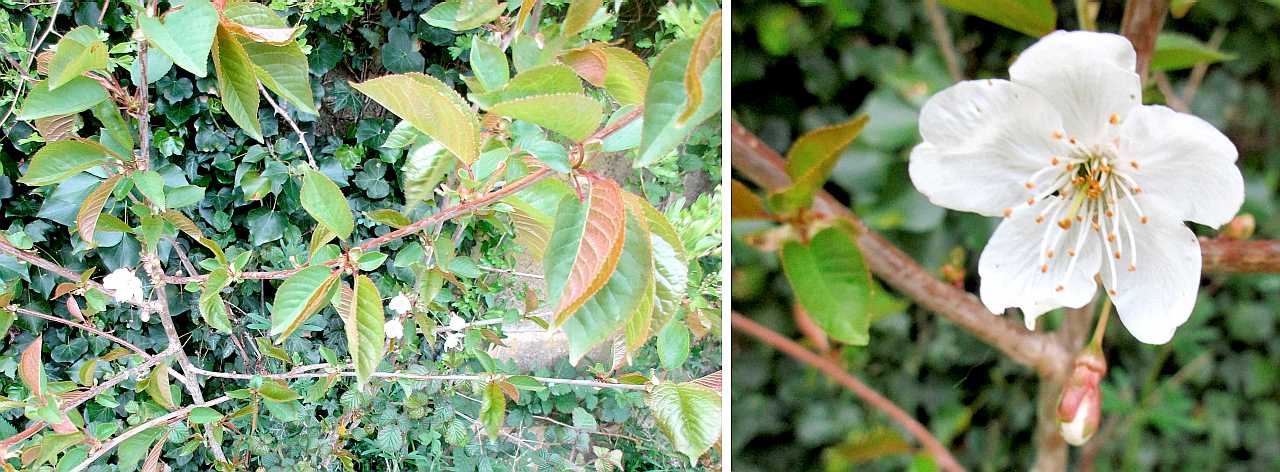 WILD CHERRY or GEAN
WILD CHERRY or GEAN HORSE CHESTNUT
HORSE CHESTNUT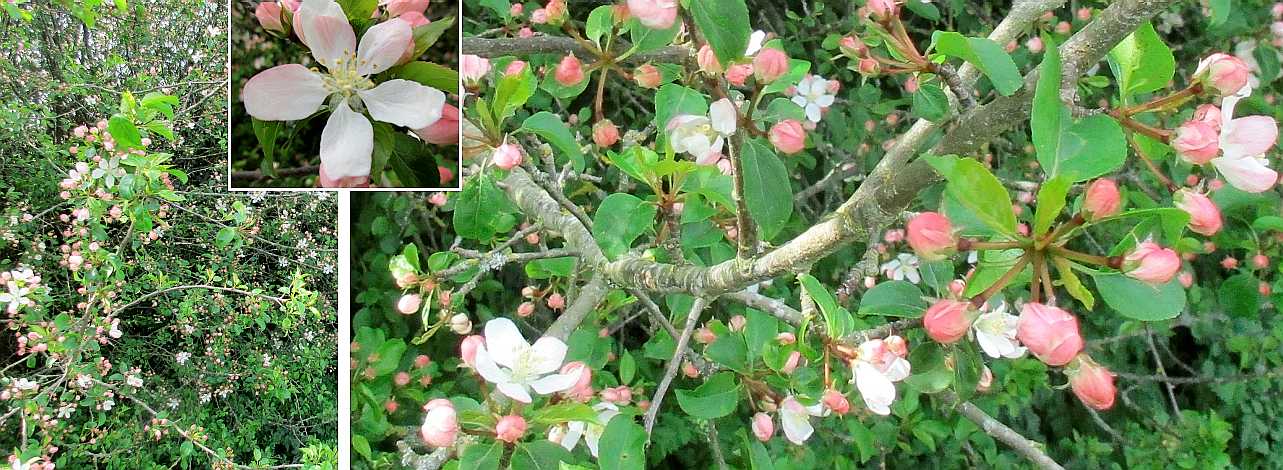 CRAB APPLE
CRAB APPLE HOGWEED
HOGWEED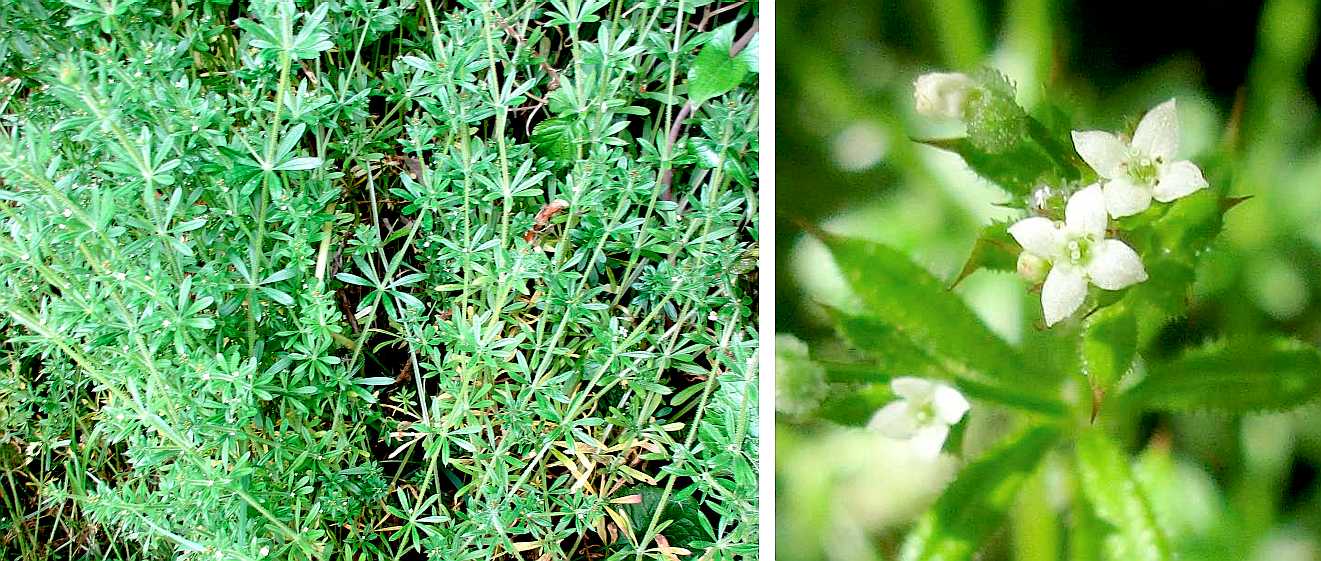 CLEAVERS
CLEAVERS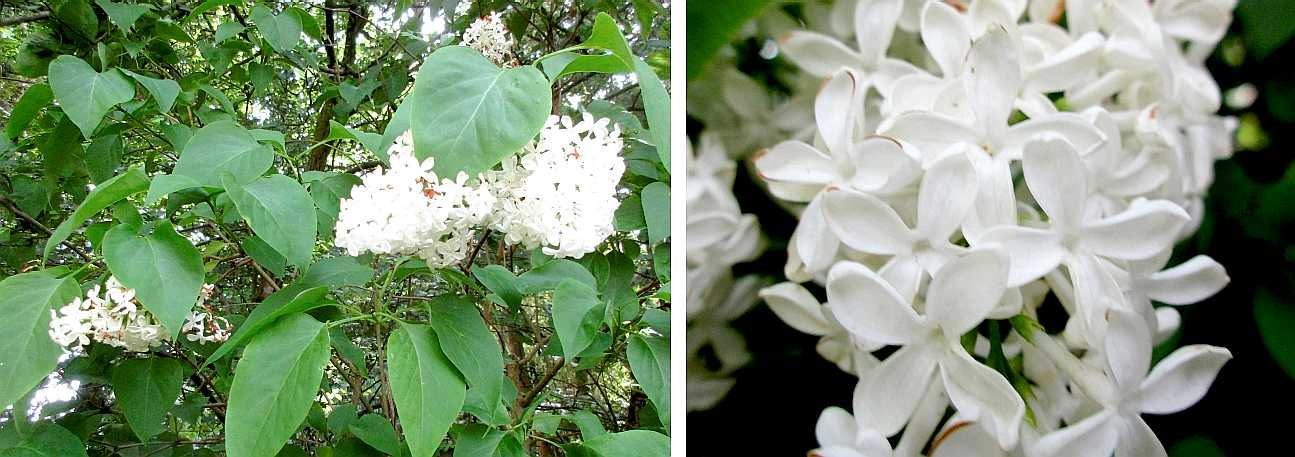 DOGWOOD
DOGWOOD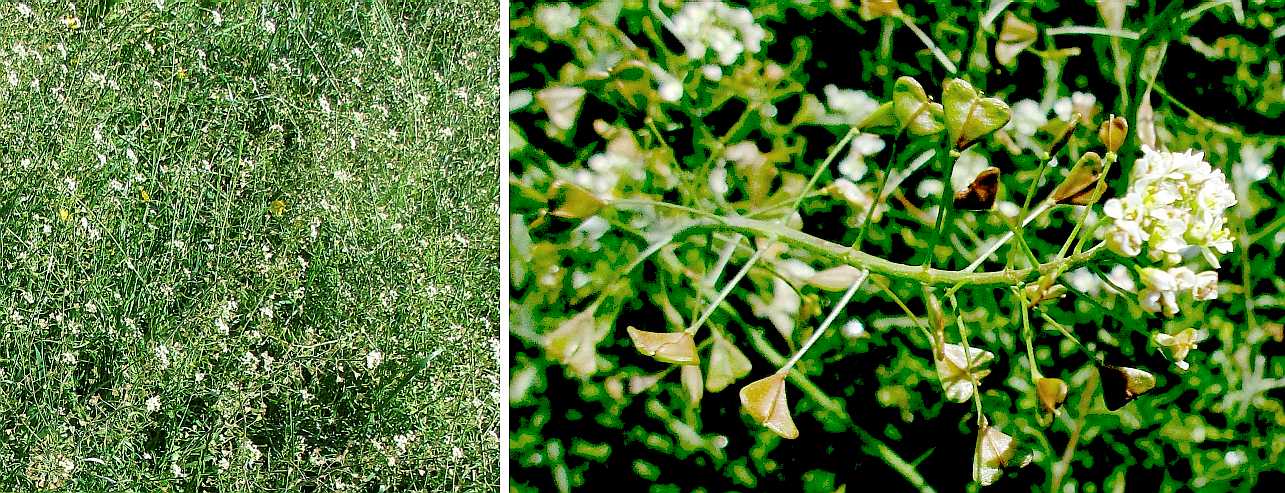 SHEPHERD'S PURSE
SHEPHERD'S PURSE HOLLY
HOLLY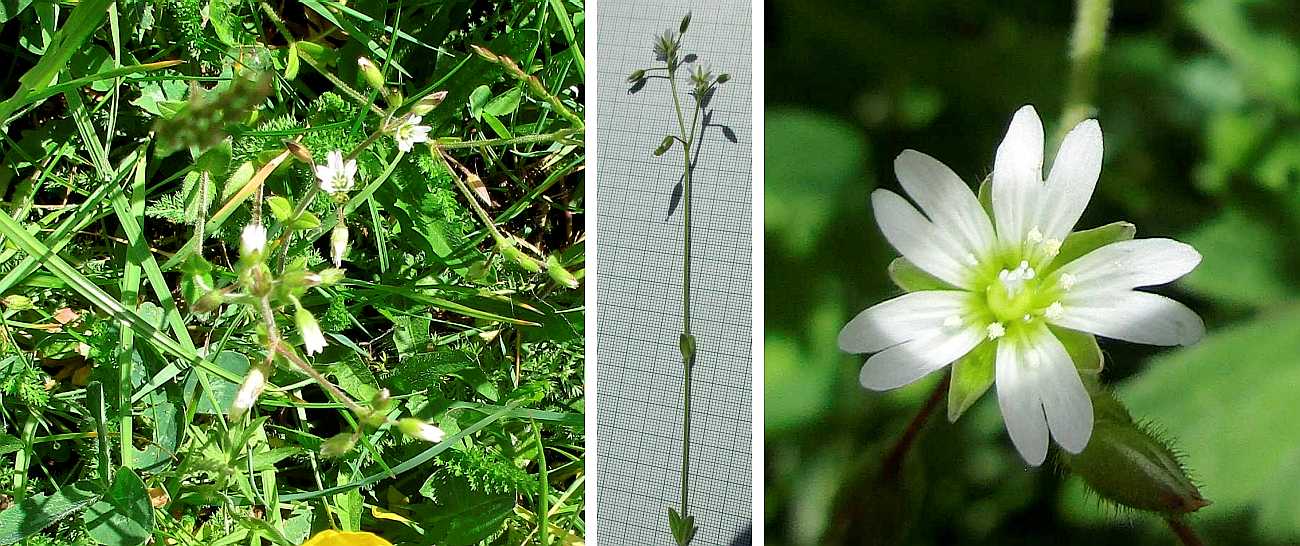 CHICKWEED
CHICKWEED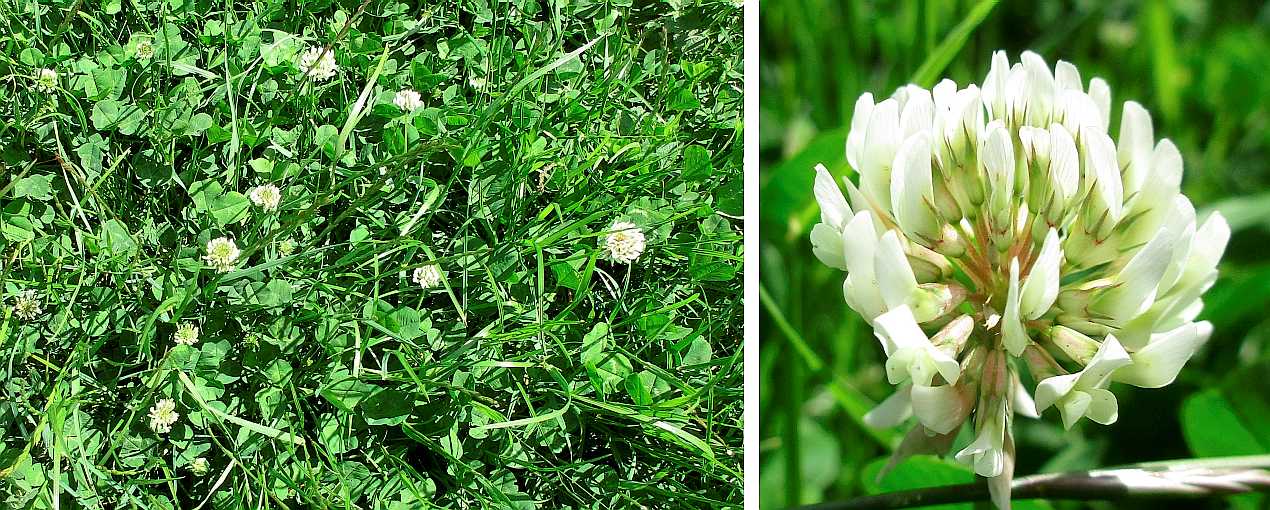 WHITE CLOVER
WHITE CLOVER ELDER
ELDER PRIVET
PRIVET OXEYE DAISY
OXEYE DAISY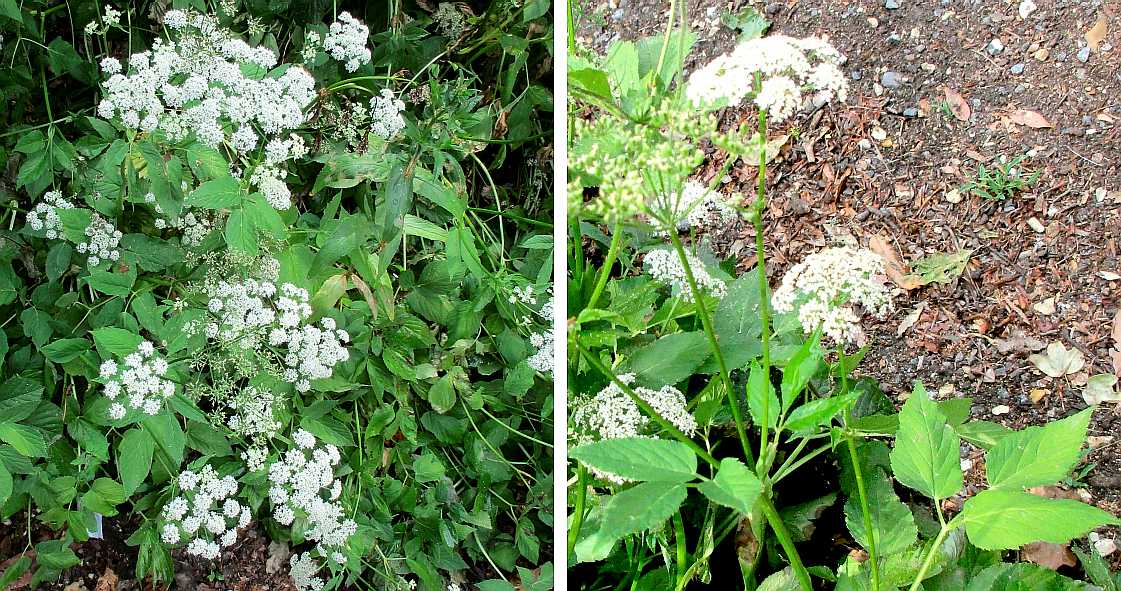 GROUND ELDER
GROUND ELDER BRAMBLE
BRAMBLE RAMBLER ROSE
RAMBLER ROSE FIELD BINDWEED
FIELD BINDWEED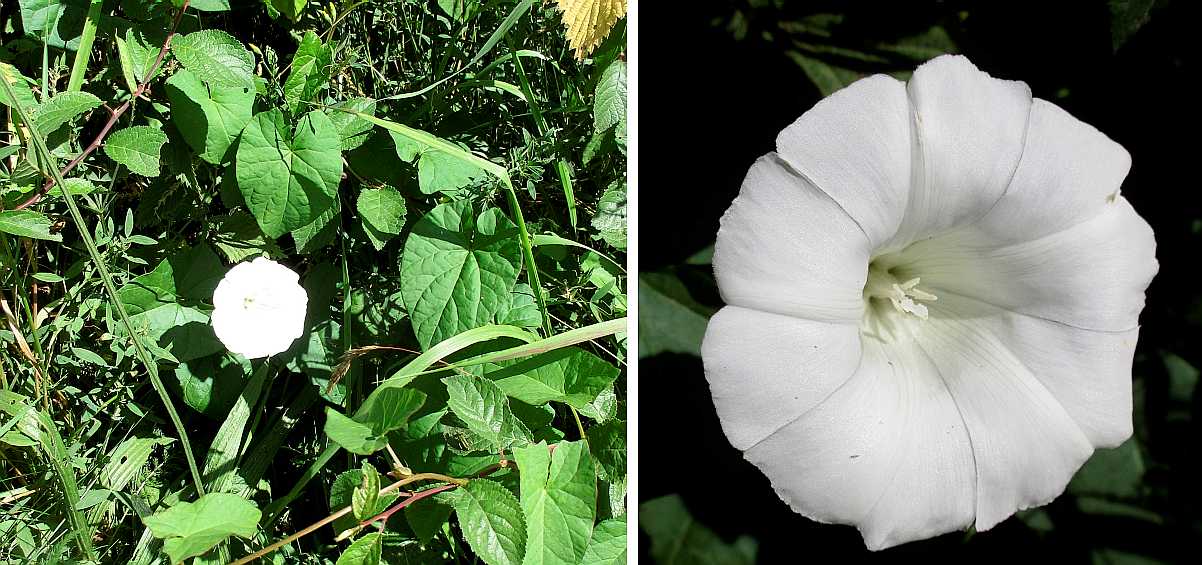 HEDGE BINDWEED
HEDGE BINDWEED YARROW
YARROW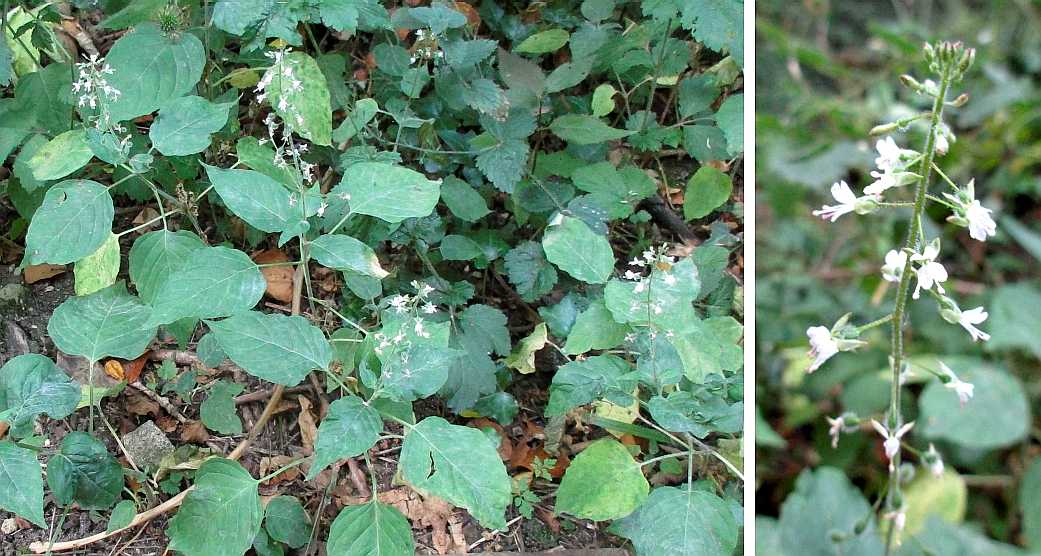 ENCHANTER'S NIGHTSHADE
ENCHANTER'S NIGHTSHADE TRAVELLER'S JOY
TRAVELLER'S JOY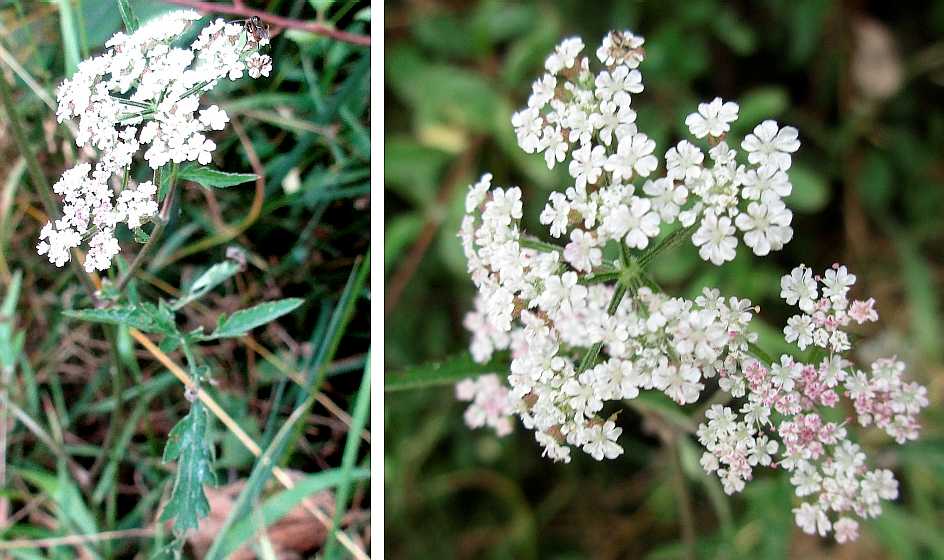 HEDGE PARSLEY
HEDGE PARSLEY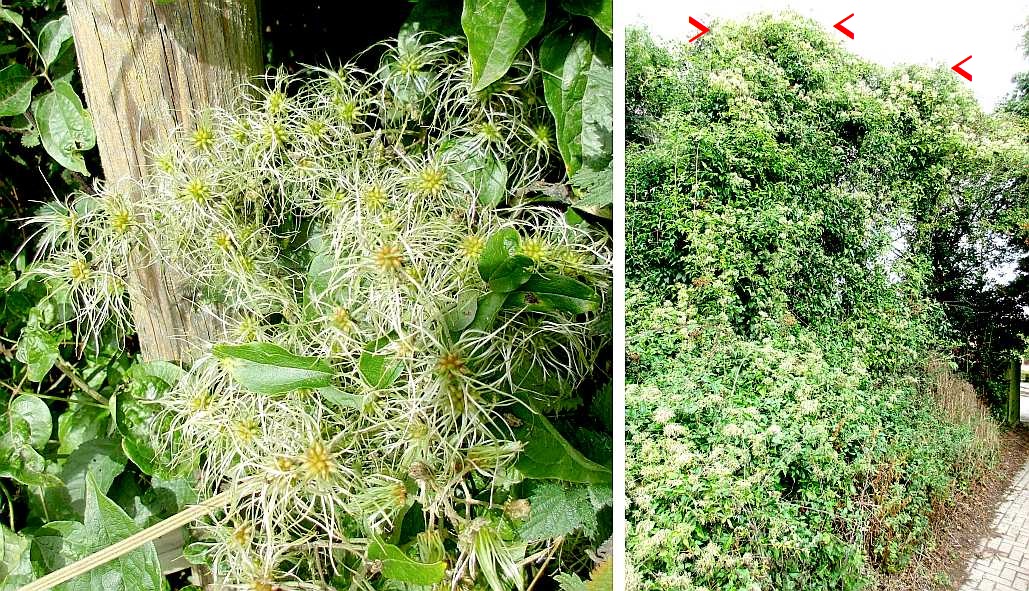 TRAVELLER'S JOY
TRAVELLER'S JOY TRAVELLER'S JOY
TRAVELLER'S JOY HAZEL FLOWERS
HAZEL FLOWERS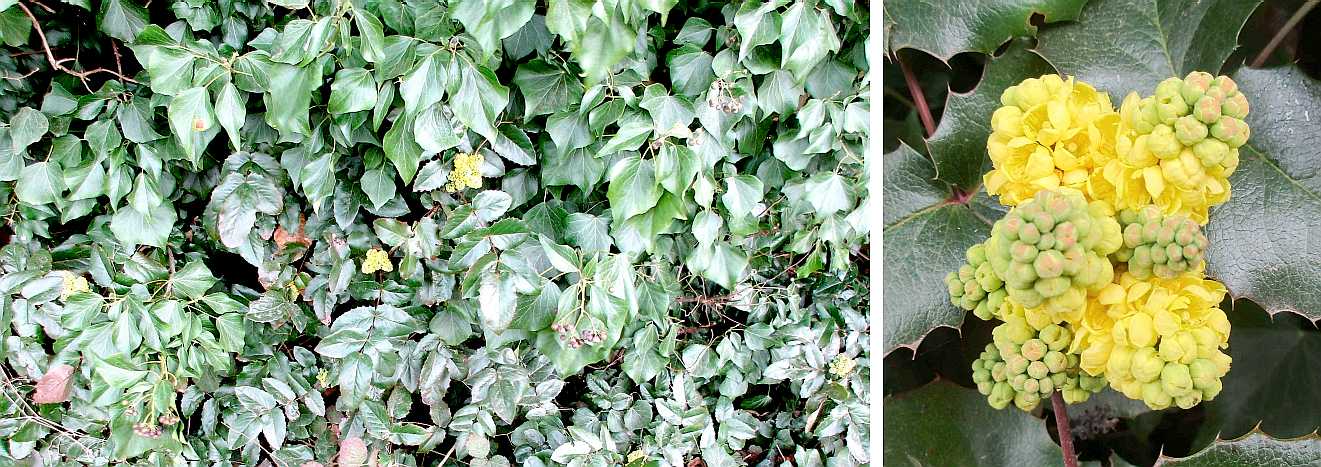 MAHONIA
MAHONIA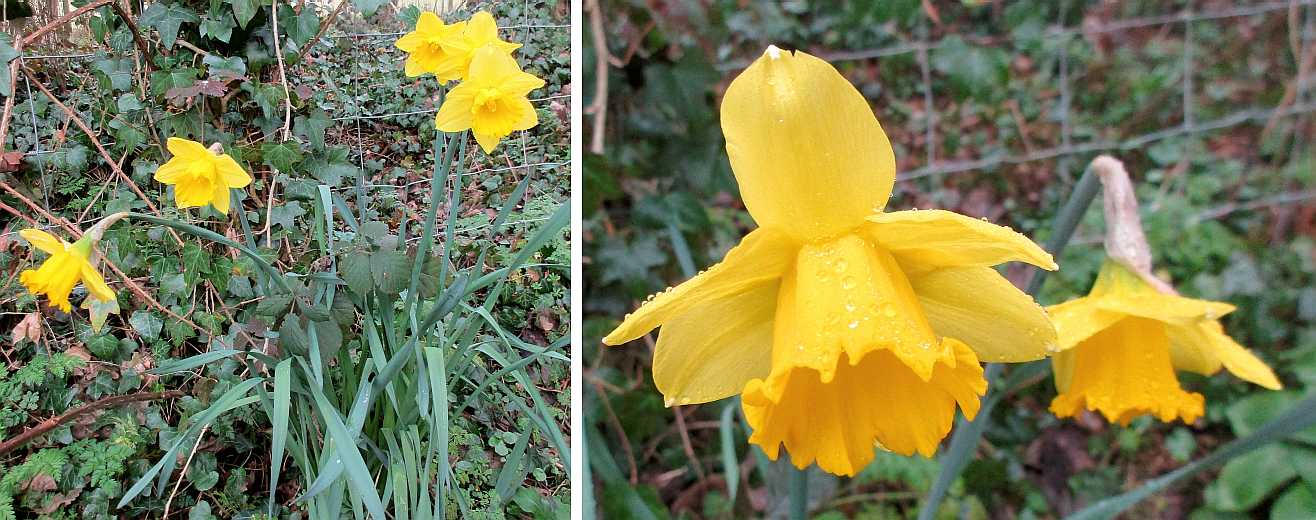 DAFFODILS
DAFFODILS LESSER CELANDINE
LESSER CELANDINE DANDELION
DANDELION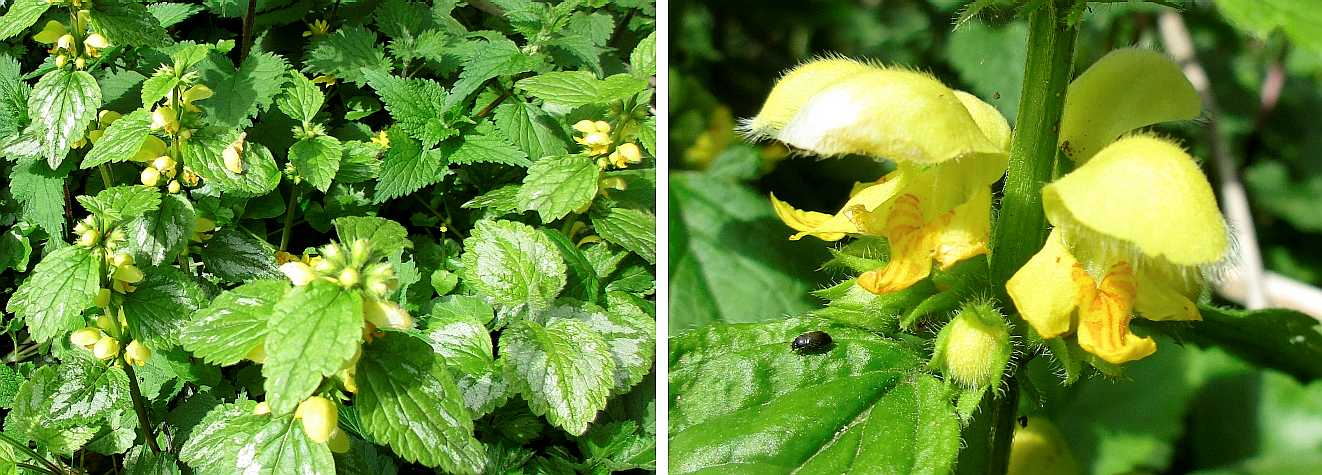 YELLOW ARCHANGEL
YELLOW ARCHANGEL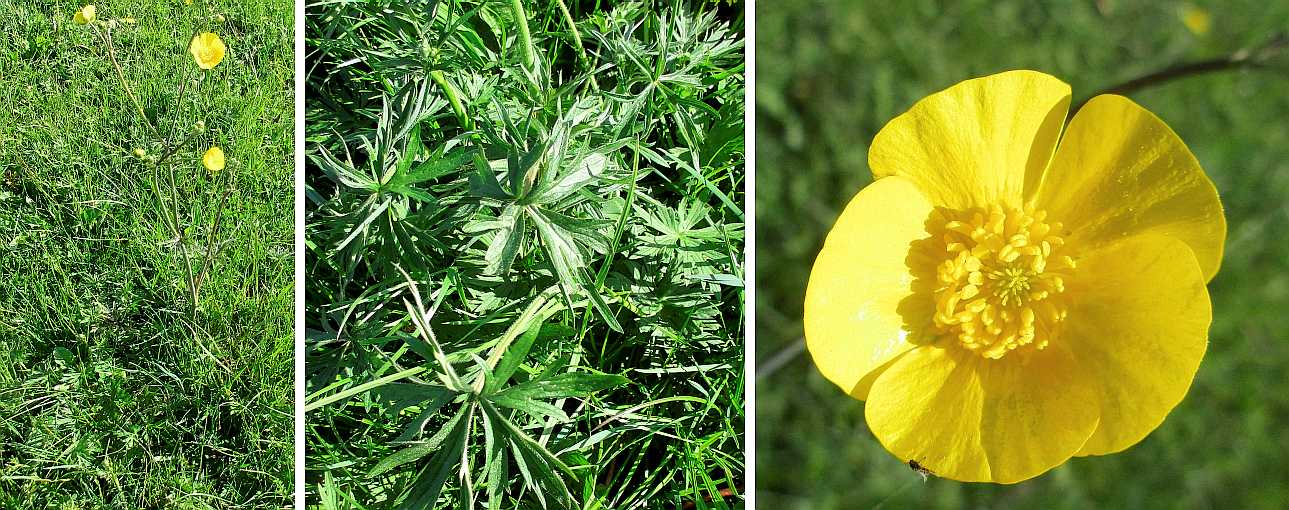 MEADOW BUTTERCUP
MEADOW BUTTERCUP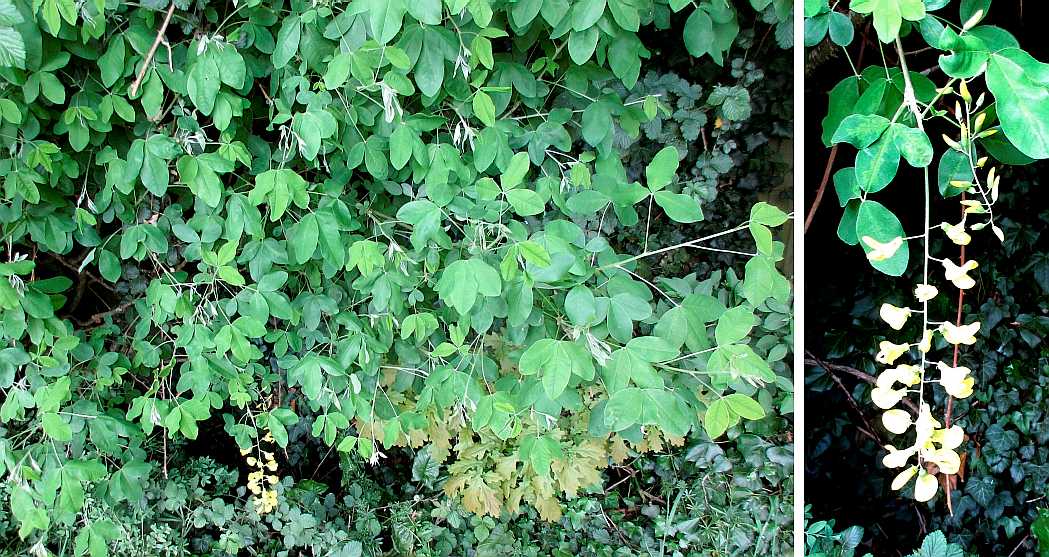 LABURNUM
LABURNUM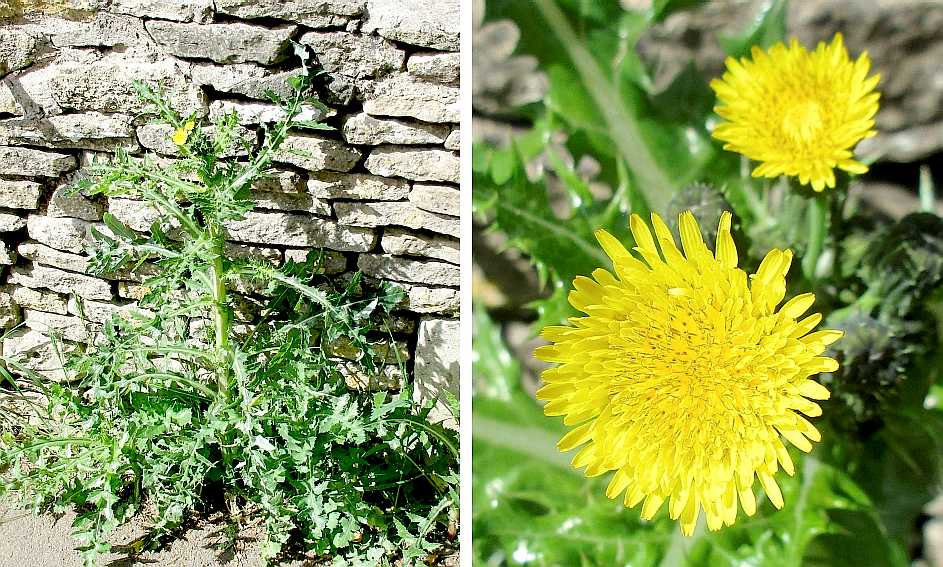 SOWTHISTLE
SOWTHISTLE WHITE MUSTARD
WHITE MUSTARD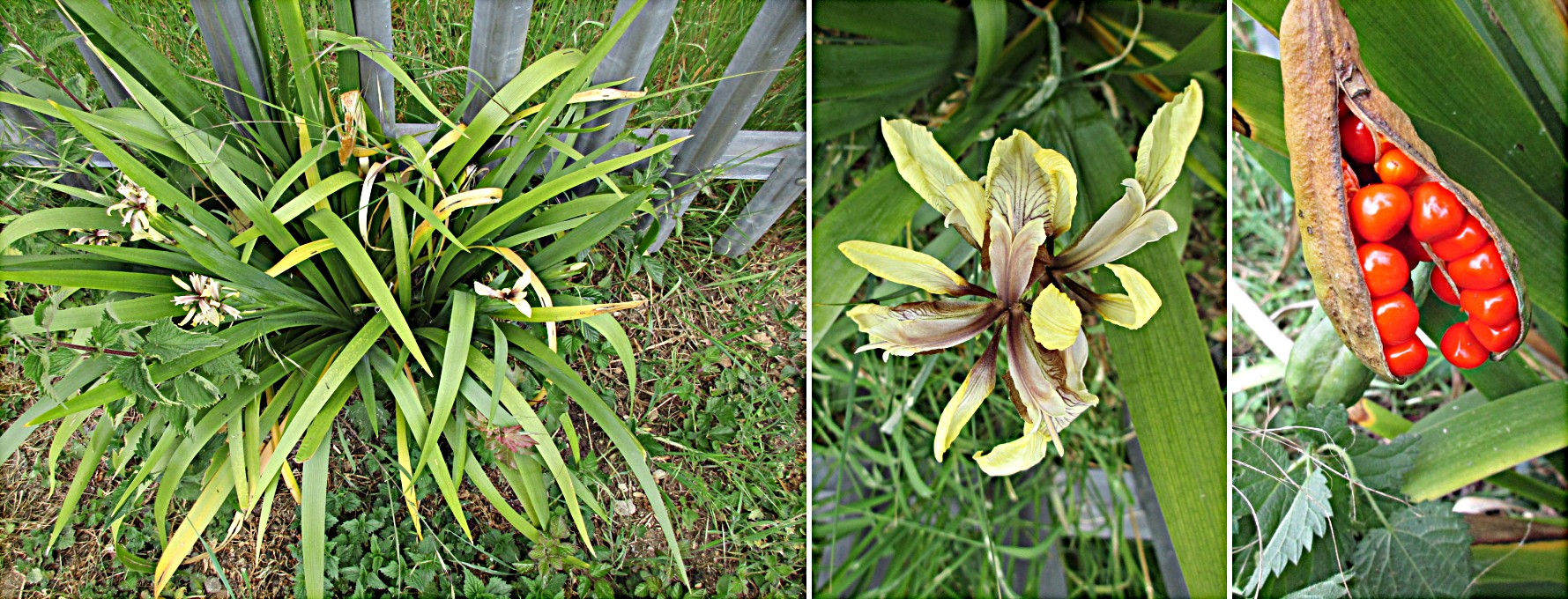 STINKING IRIS
STINKING IRIS WOOD AVENS
WOOD AVENS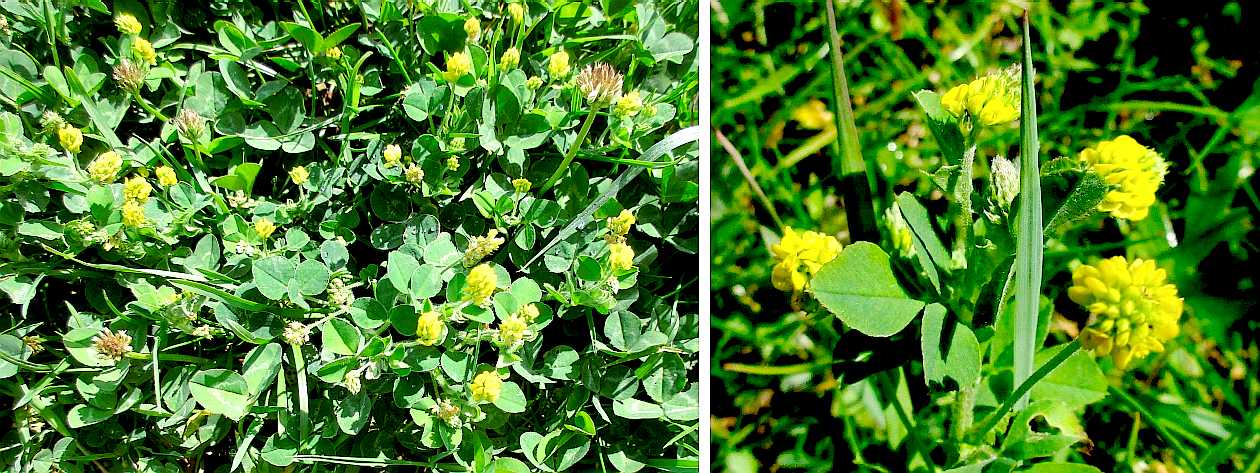 BLACK MEDICK
BLACK MEDICK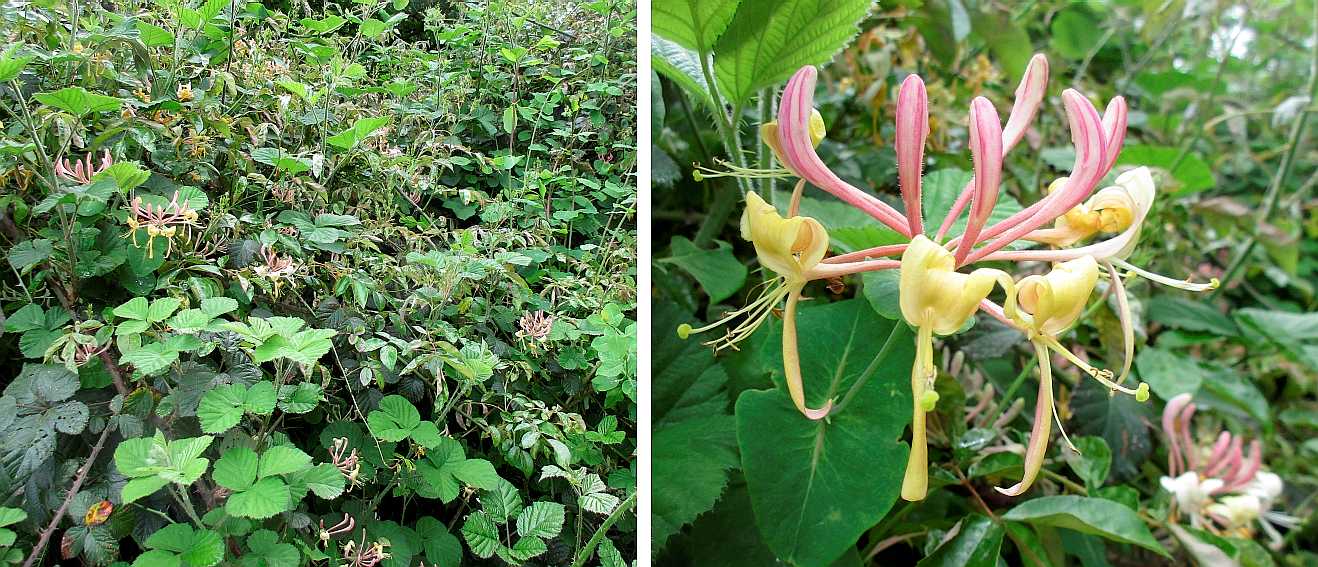 HONEYSUCKLE
HONEYSUCKLE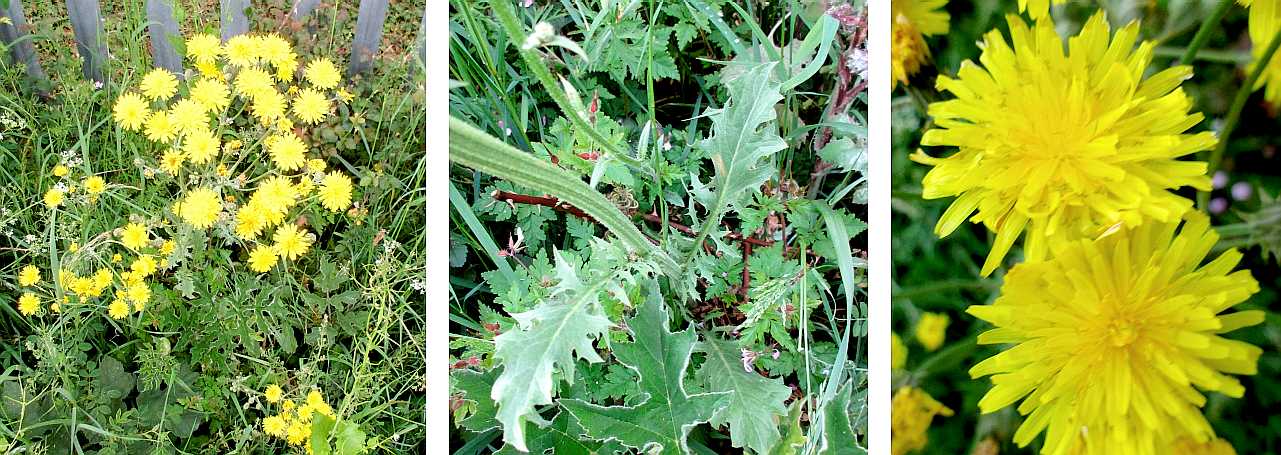 ROUGH HAWK'S-BEARD
ROUGH HAWK'S-BEARD YELLOW IRIS :: YELLOW FLAG :: WATER IRIS
YELLOW IRIS :: YELLOW FLAG :: WATER IRIS LADY'S BEDSTRAW
LADY'S BEDSTRAW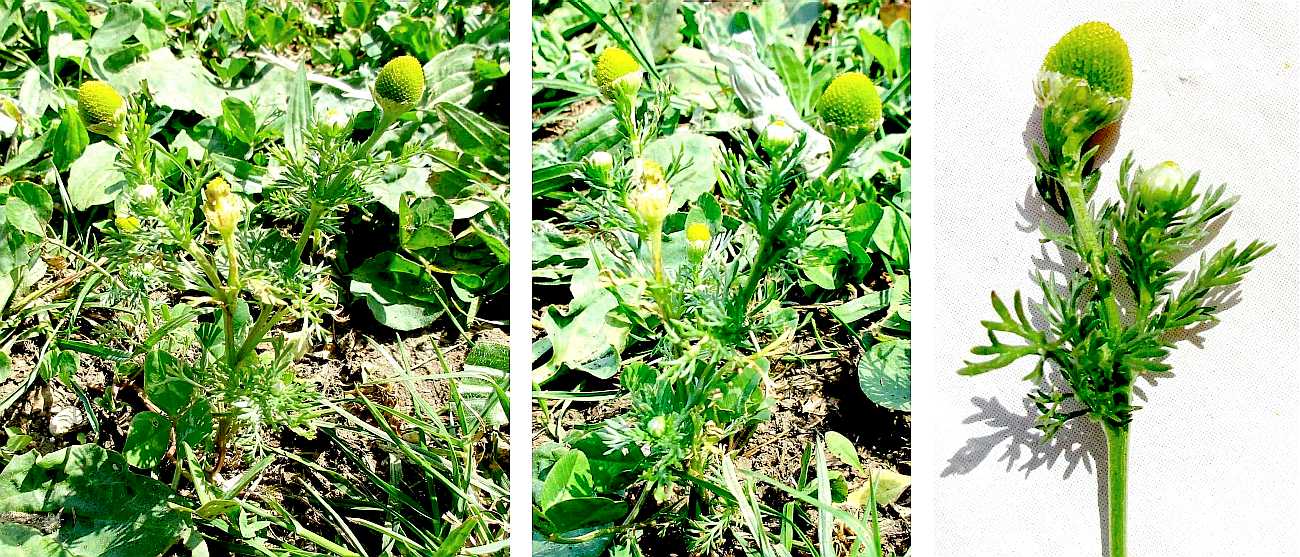 PINEAPPLE WEED
PINEAPPLE WEED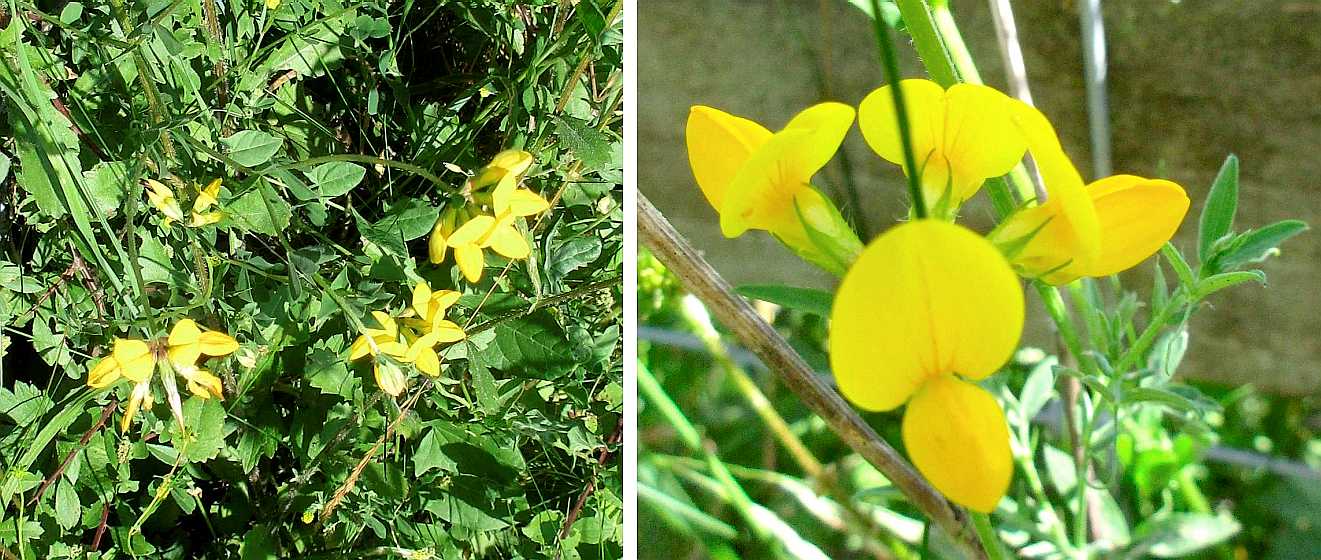 BIRD'S-FOOT TREFOIL
BIRD'S-FOOT TREFOIL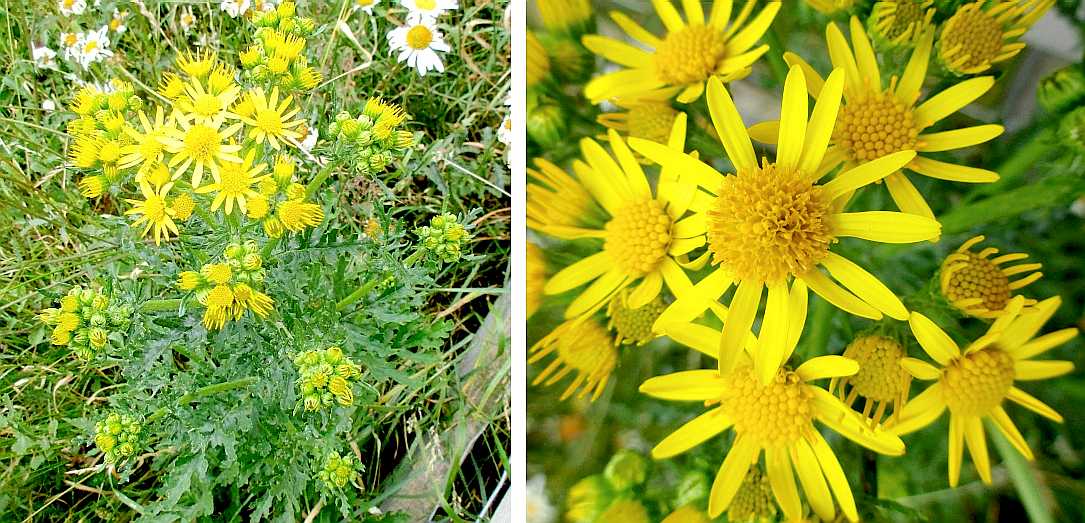 COMMON RAGWORT
COMMON RAGWORT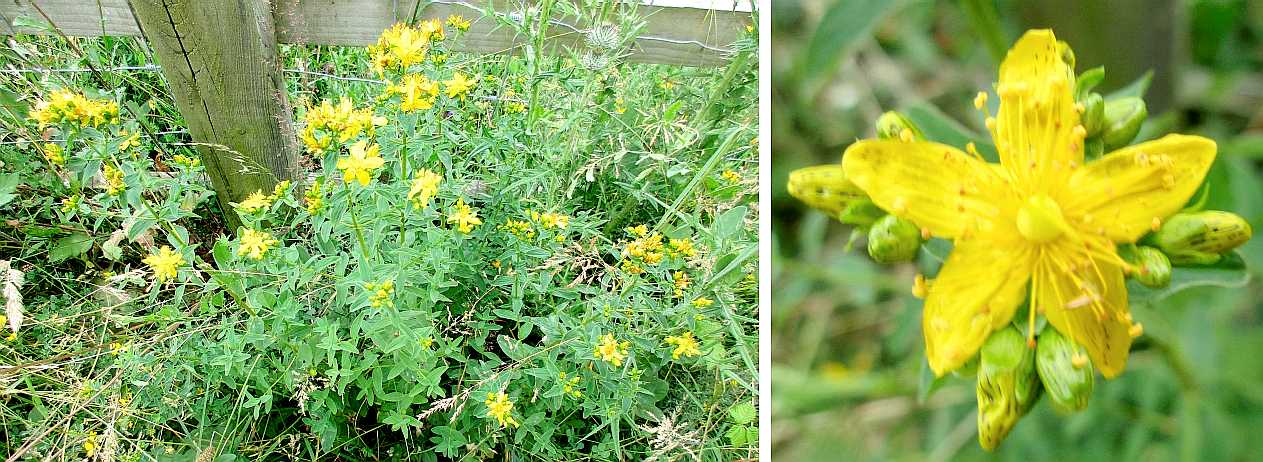 ROSE OF SHARON
ROSE OF SHARON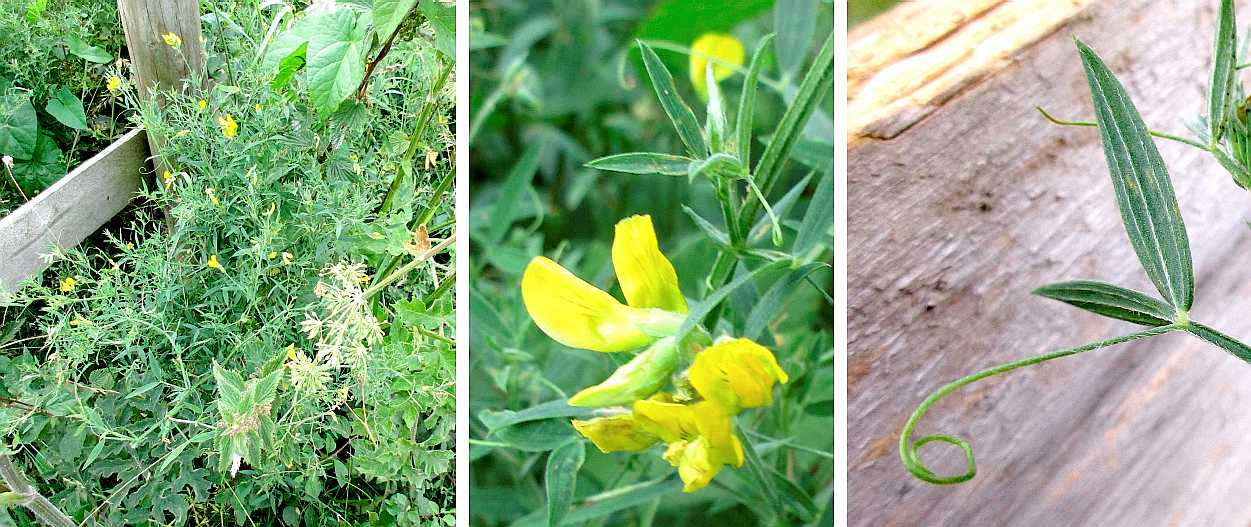 MEADOW VETCHLING
MEADOW VETCHLING RIBBED MELILOT
RIBBED MELILOT SOFT HAWK'S-BEARD
SOFT HAWK'S-BEARD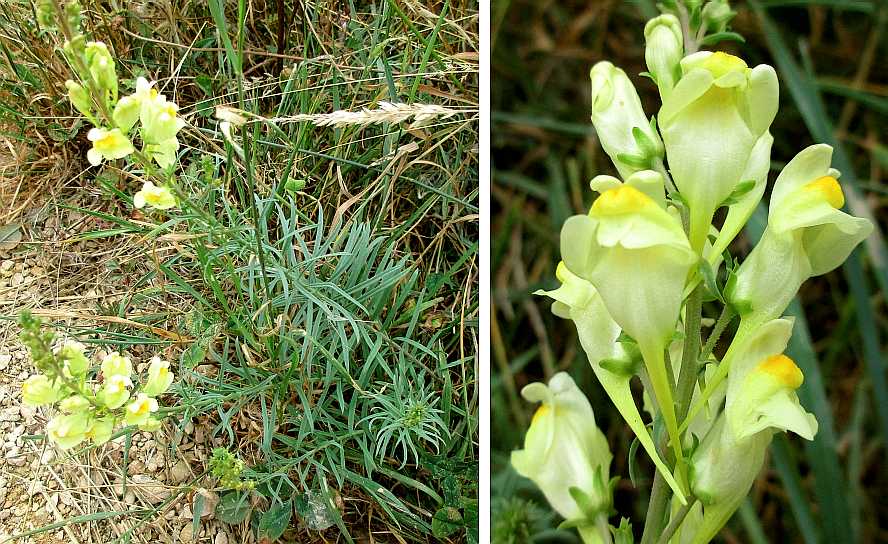 COMMON TOADFLAX
COMMON TOADFLAX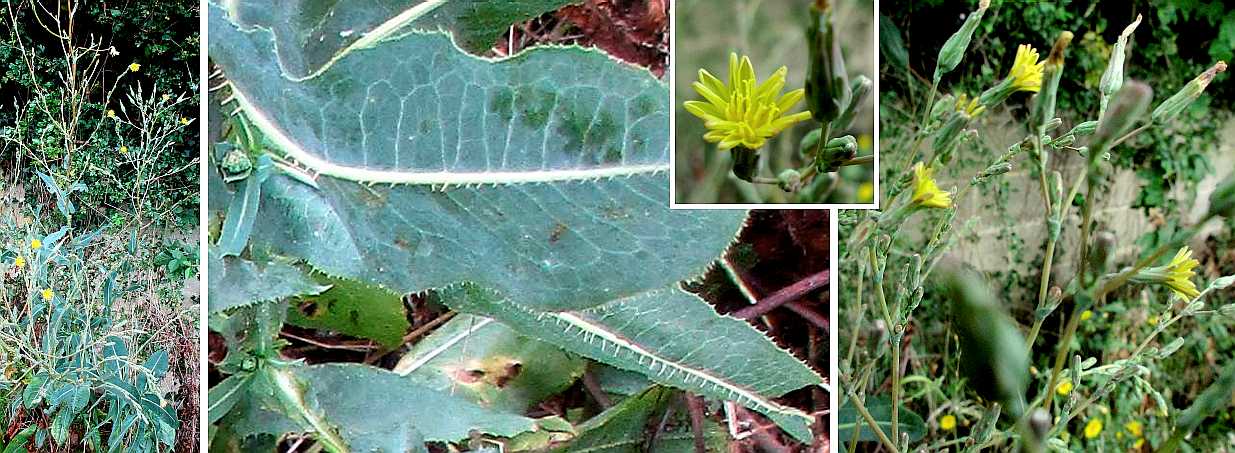 GREAT LETTUCE
GREAT LETTUCE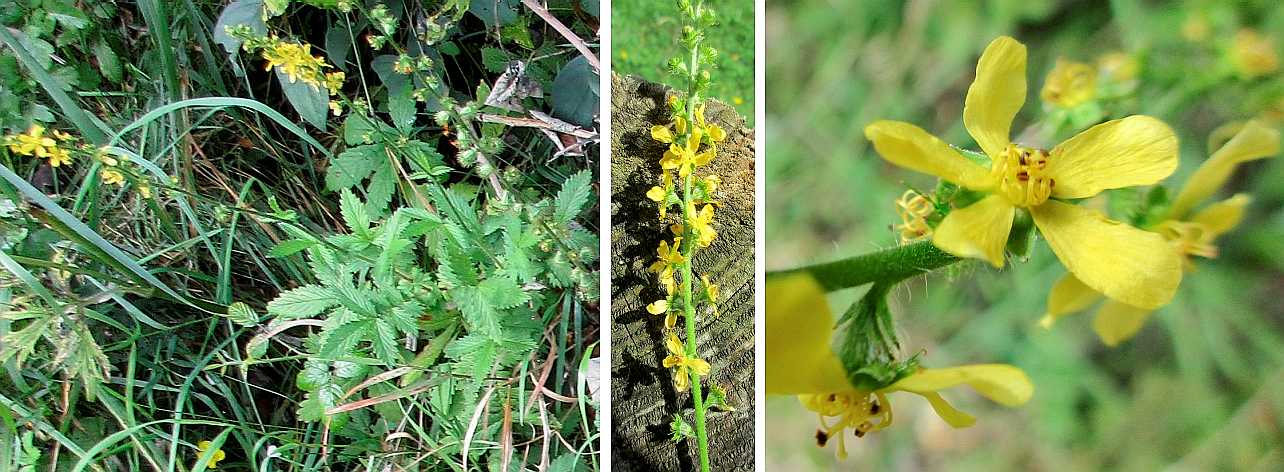 AGRIMONY
AGRIMONY LESSER HAWKBIT
LESSER HAWKBIT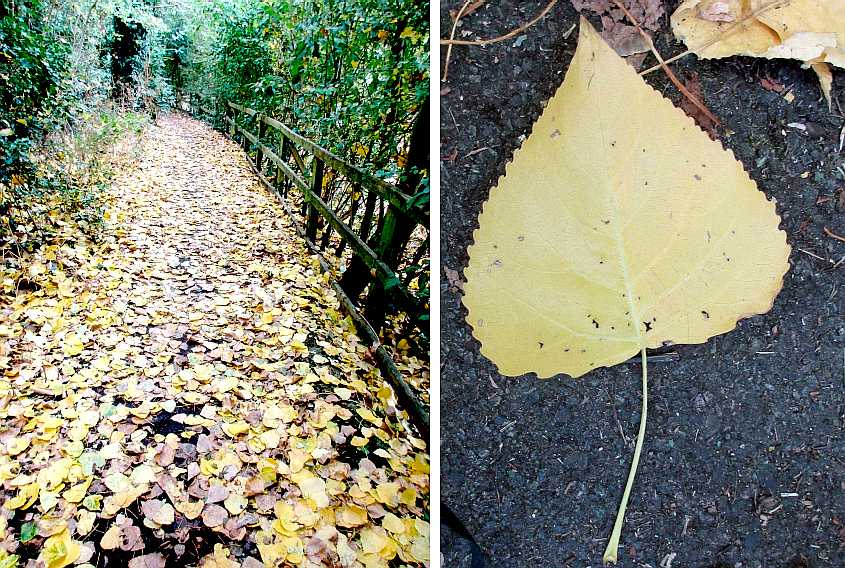 LIME LEAF-FALL
LIME LEAF-FALL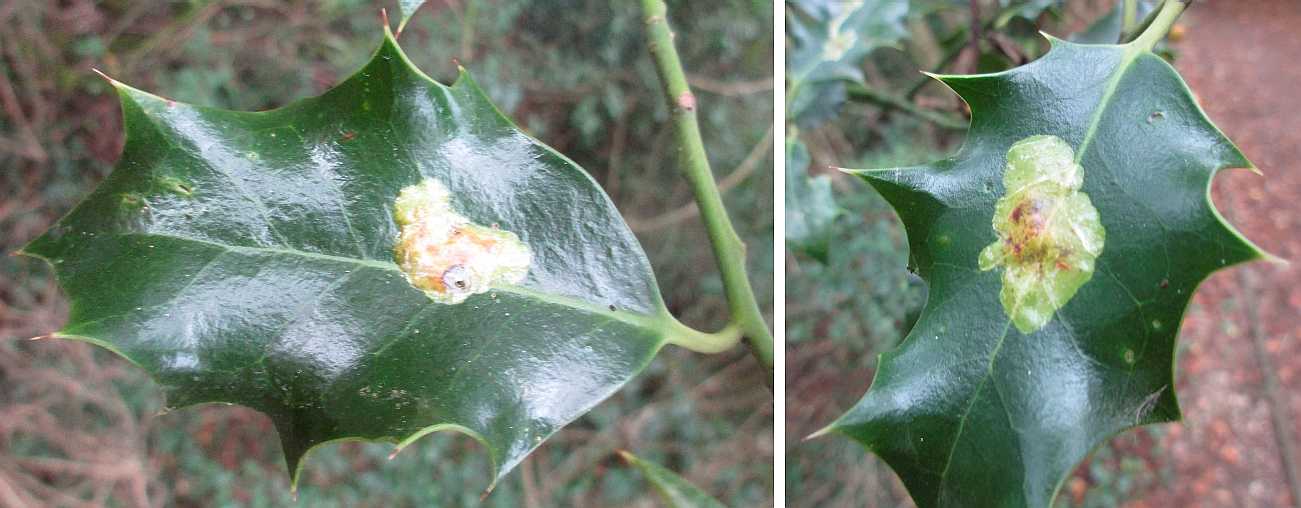 HOLLY LEAF MINER
HOLLY LEAF MINER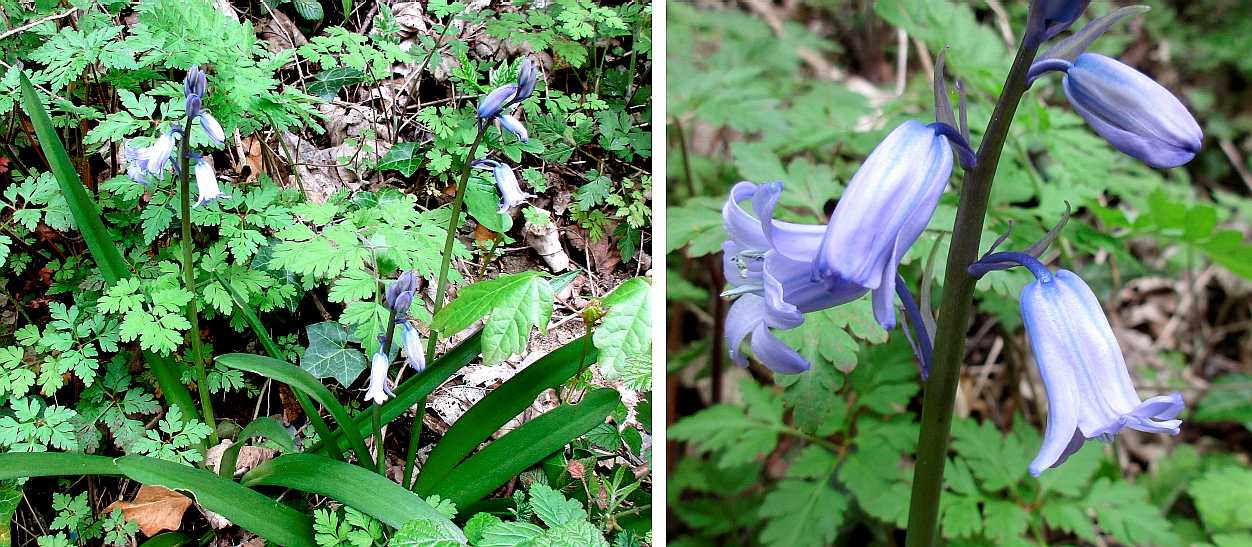 BLUEBELL
BLUEBELL COMMON FIELD SPEEDWELL
COMMON FIELD SPEEDWELL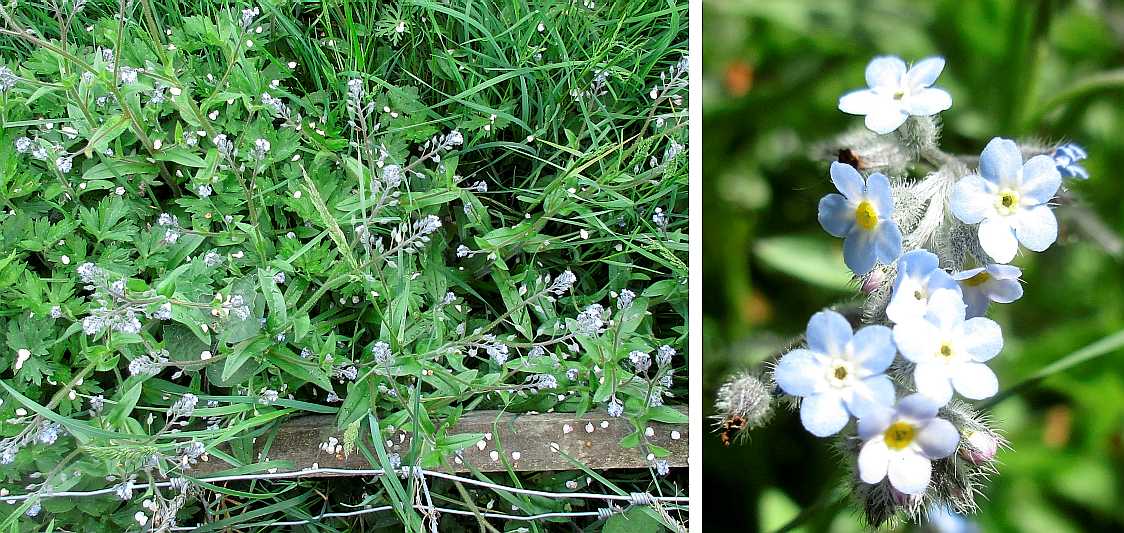 FORGET-ME-NOT
FORGET-ME-NOT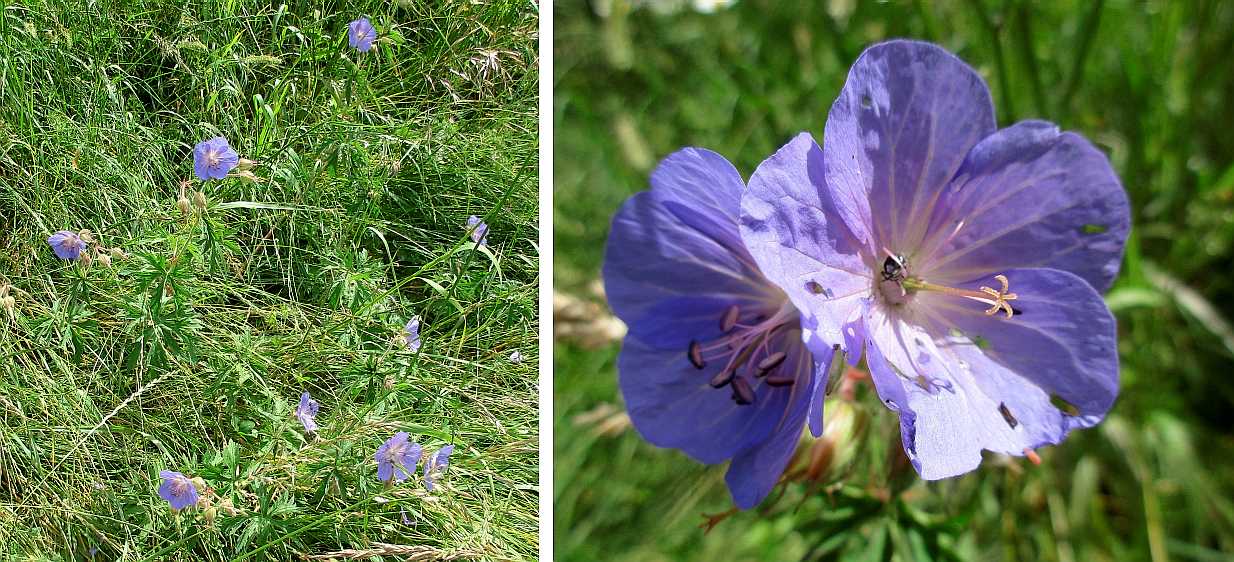 MEADOW CRANE'S-BILL
MEADOW CRANE'S-BILL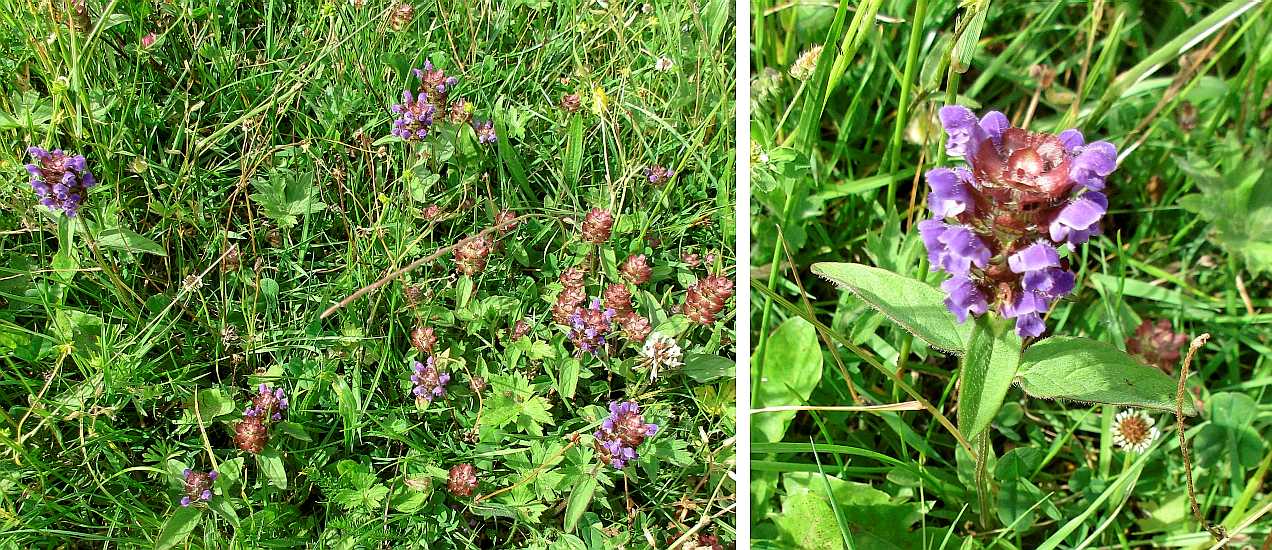 SELF-HEAL
SELF-HEAL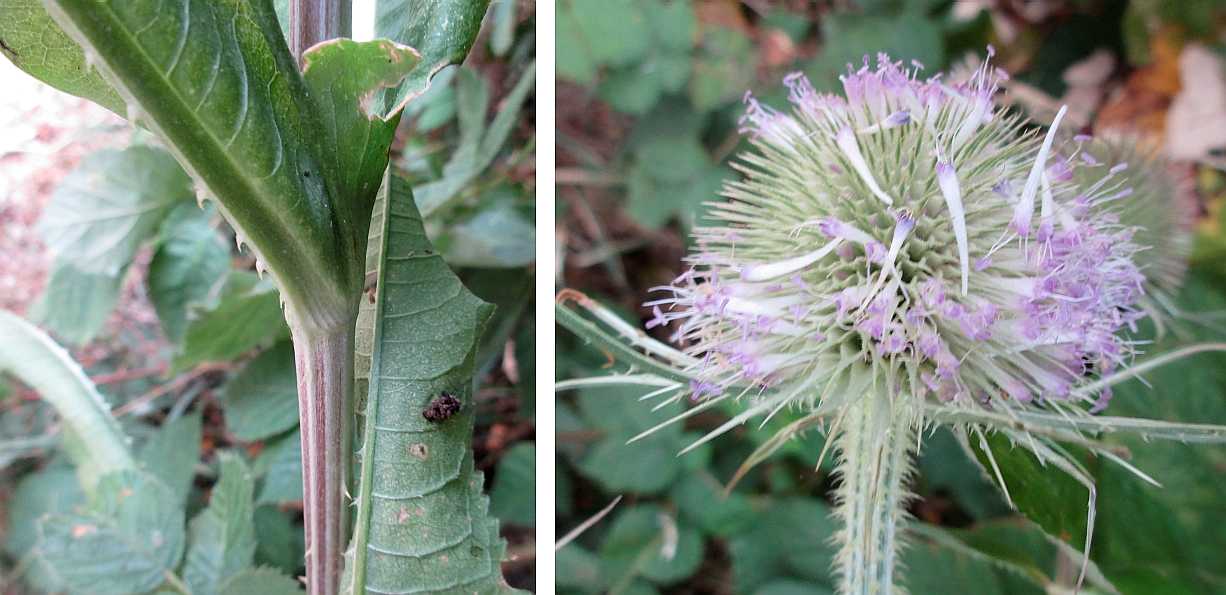 TEASEL
TEASEL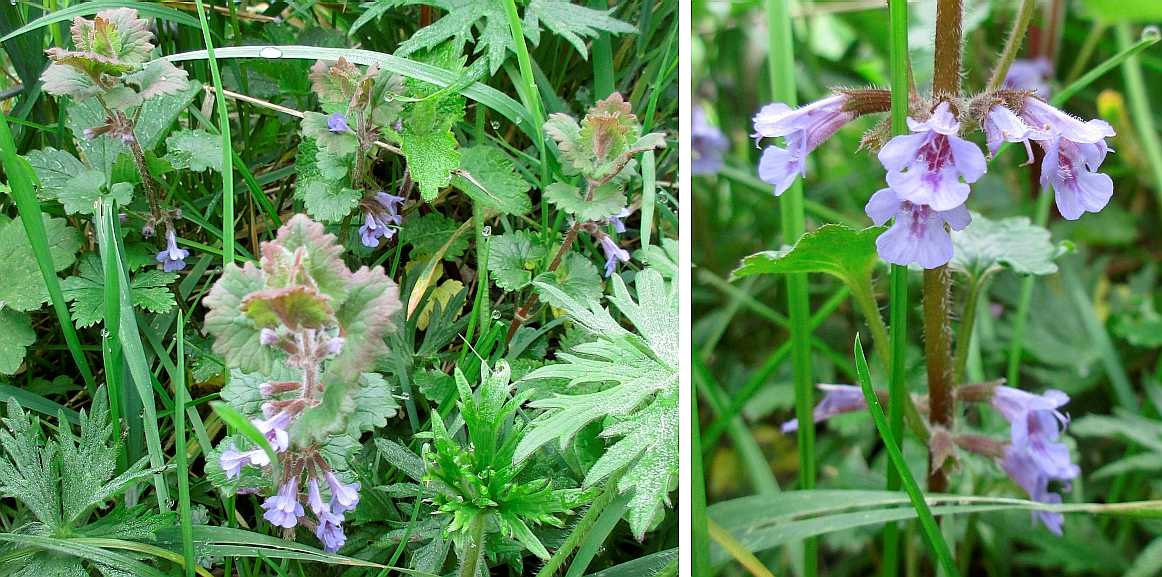 GROUND IVY
GROUND IVY BUSH VETCH
BUSH VETCH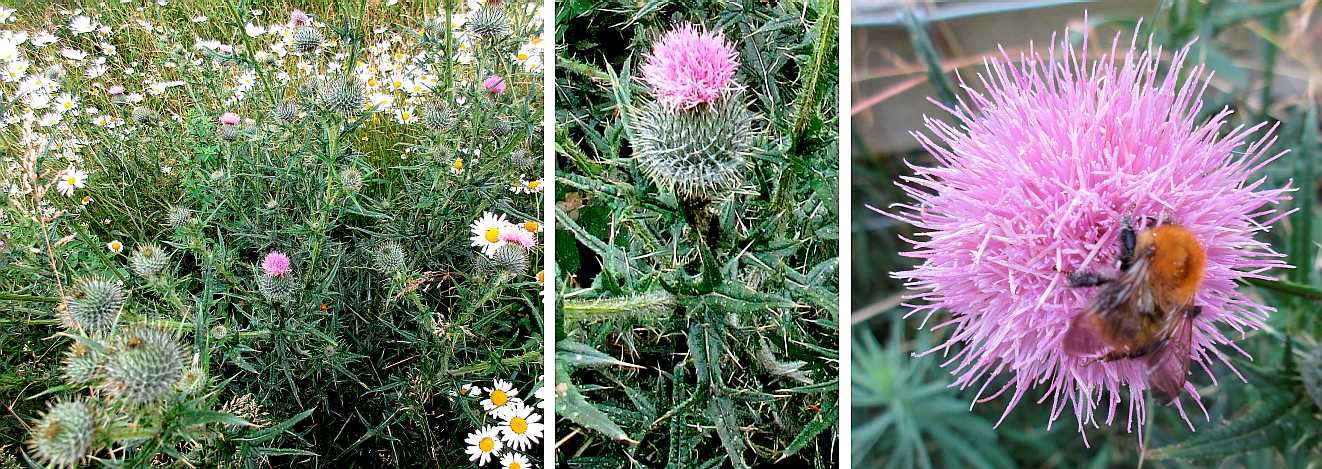 SPEAR THISLE
SPEAR THISLE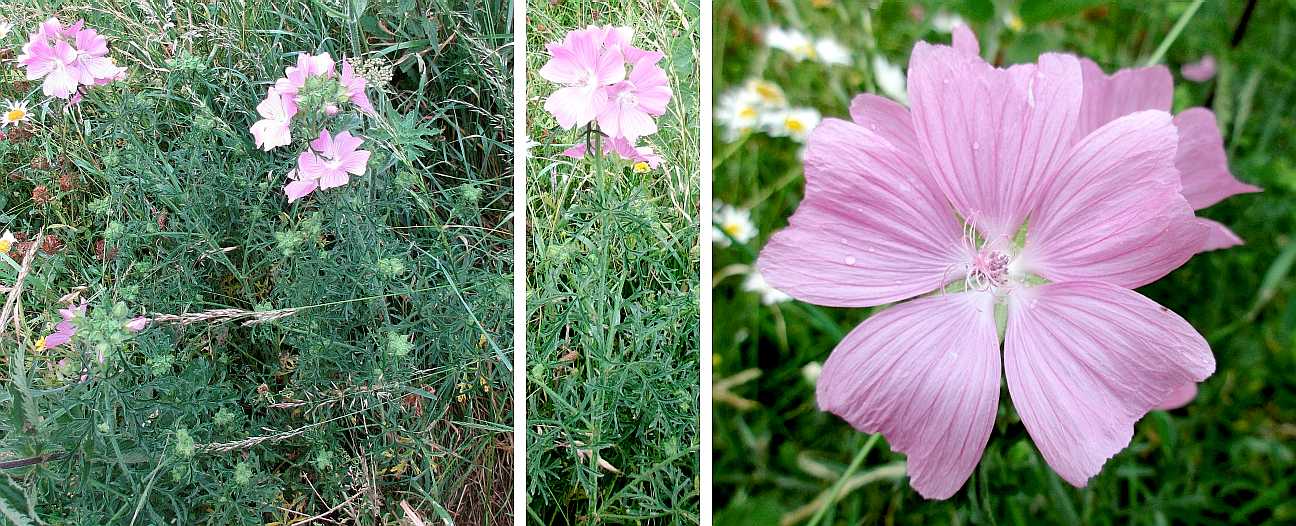 MUSK MALLOW
MUSK MALLOW BUDDLEIA
BUDDLEIA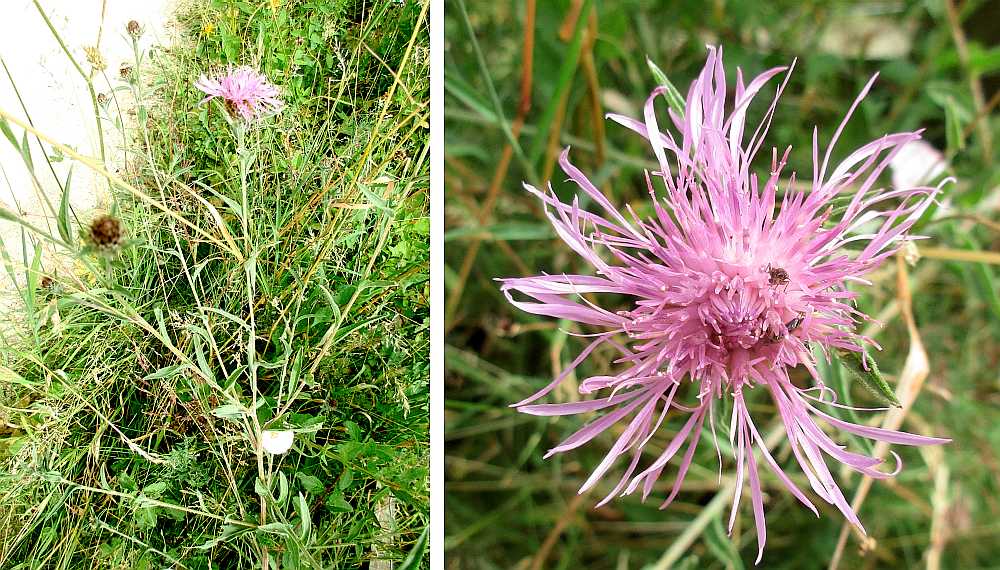 (COMMON) KNAPWEED
(COMMON) KNAPWEED WOOLLY THISTLE
WOOLLY THISTLE VISITORS on those short-lived flowers include many kinds of bees, a sloe shieldbug, a brimstone butterfly, and a triumphant climbing snail!
VISITORS on those short-lived flowers include many kinds of bees, a sloe shieldbug, a brimstone butterfly, and a triumphant climbing snail!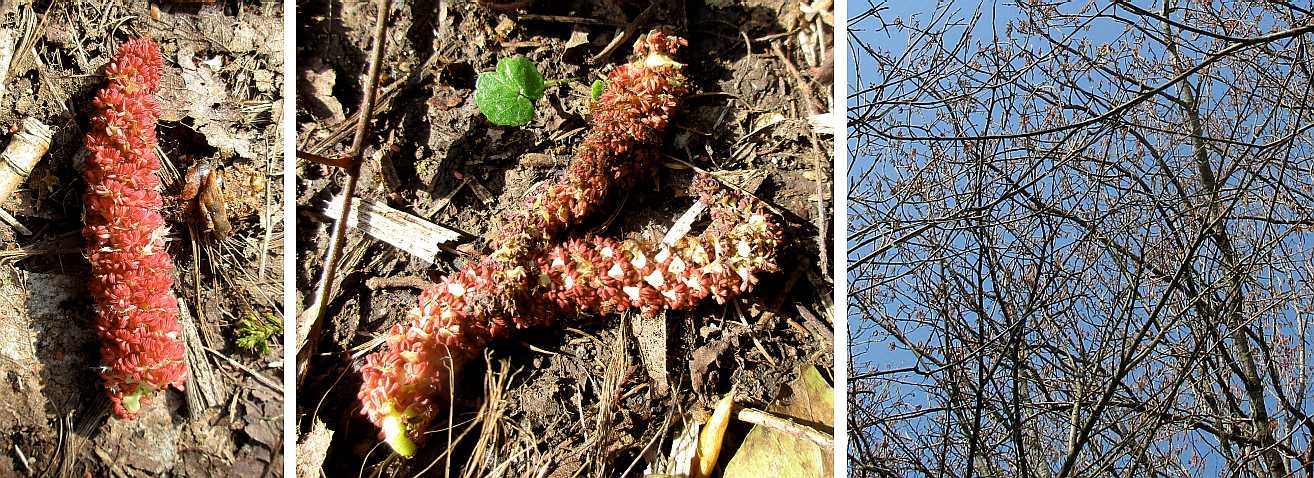 When you come across these red wormy-things on the path in early spring, look up. There are others high above your head. They are male catkins of the black poplar tree.
When you come across these red wormy-things on the path in early spring, look up. There are others high above your head. They are male catkins of the black poplar tree. This deep red mystery was first photographed in early April. Revisited over the next few weeks, it proved to be the sapling of a -
This deep red mystery was first photographed in early April. Revisited over the next few weeks, it proved to be the sapling of a - HERB ROBERT
HERB ROBERT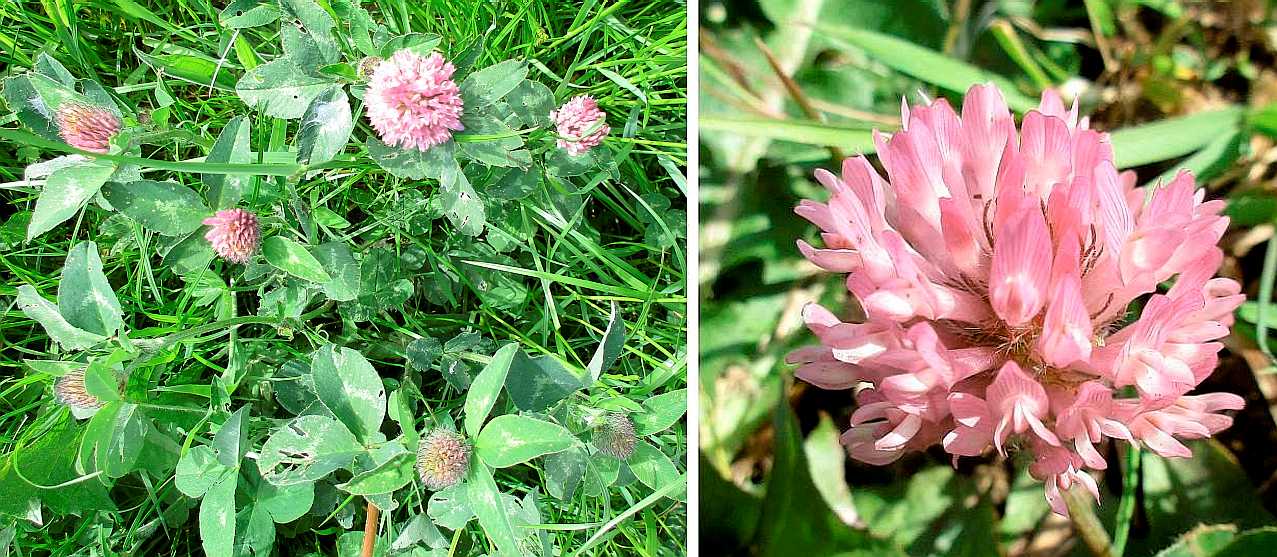 RED CLOVER
RED CLOVER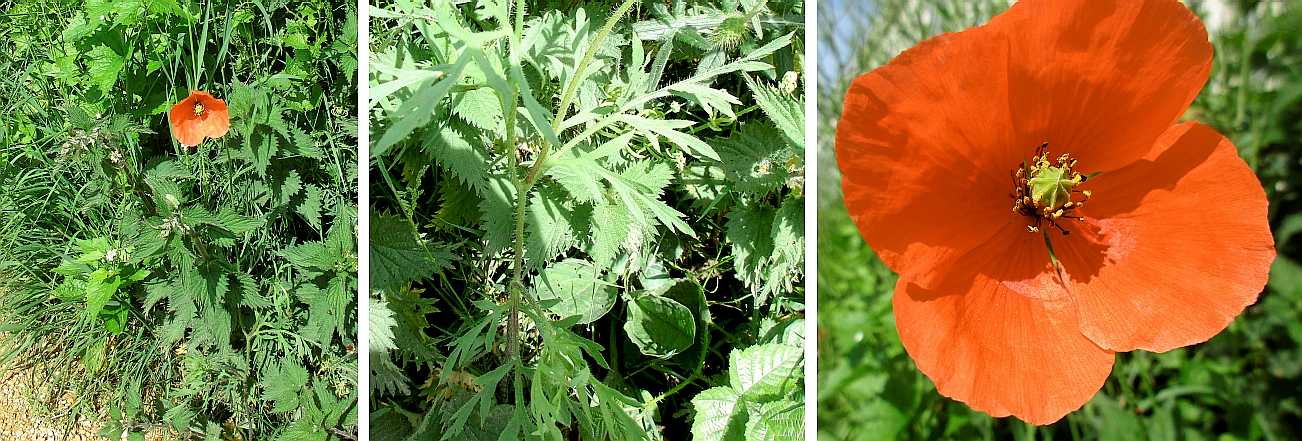 COMMON POPPY
COMMON POPPY DOG ROSE
DOG ROSE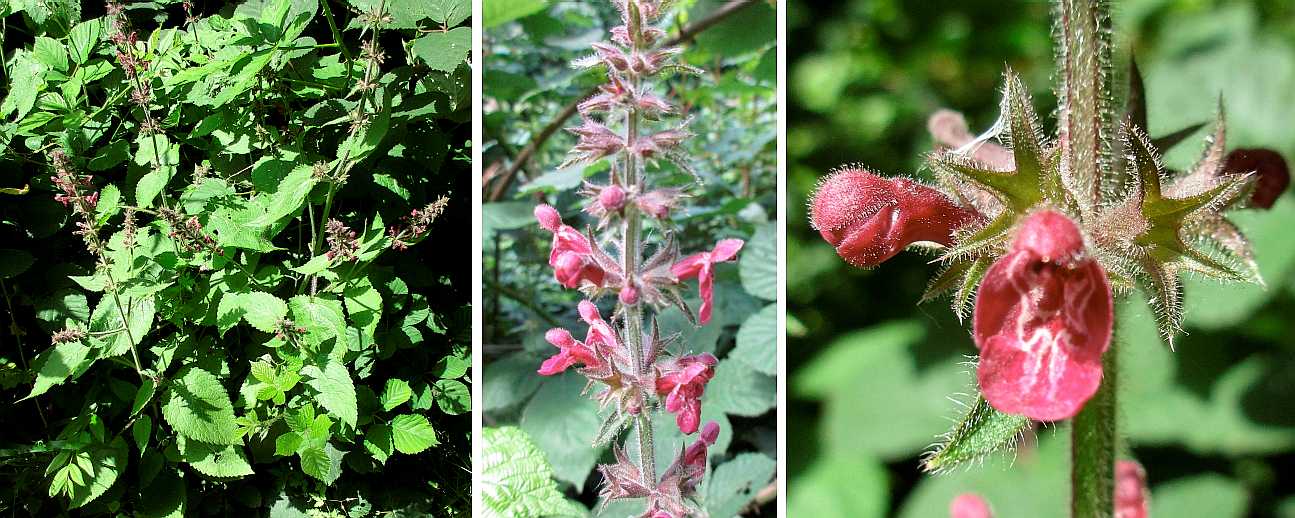 HEDGE WOUNDWORT
HEDGE WOUNDWORT FIELD BINDWEED
FIELD BINDWEED ROSEBAY WILLOWHERB
ROSEBAY WILLOWHERB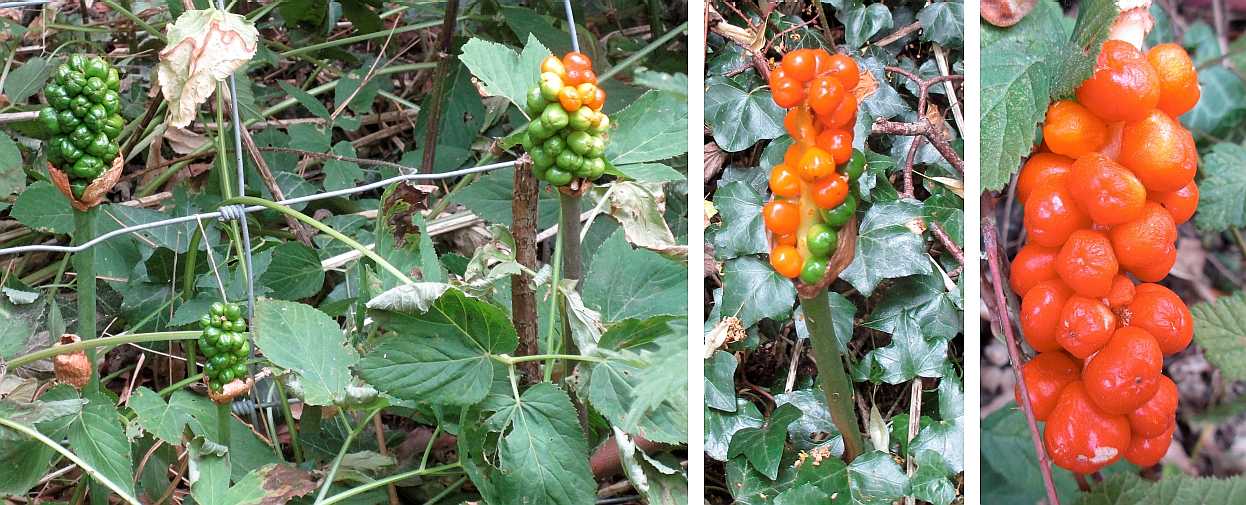 CUCKOO-PINT
CUCKOO-PINT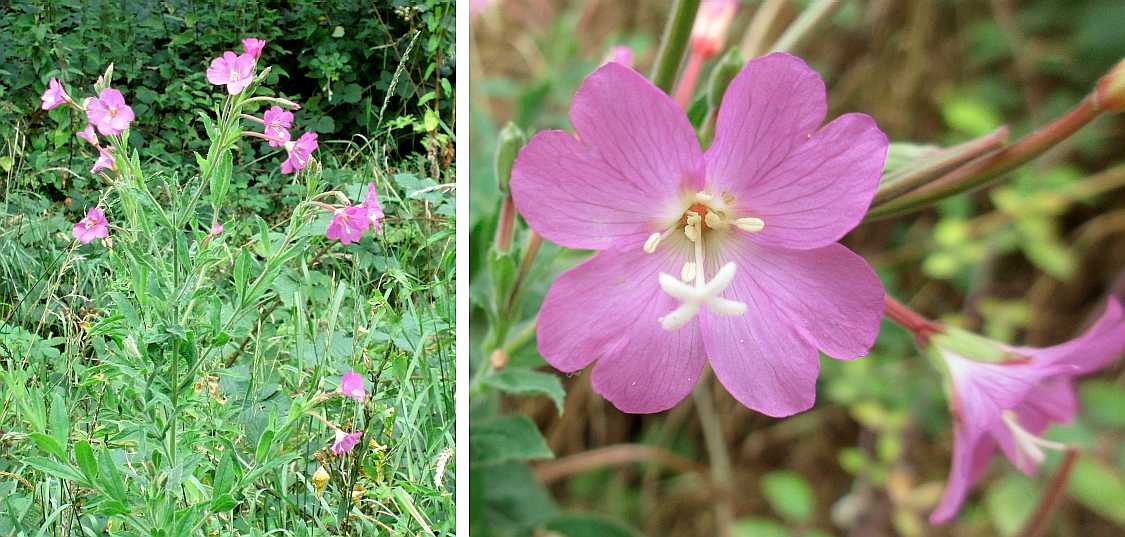 GREAT WILLOWHERB
GREAT WILLOWHERB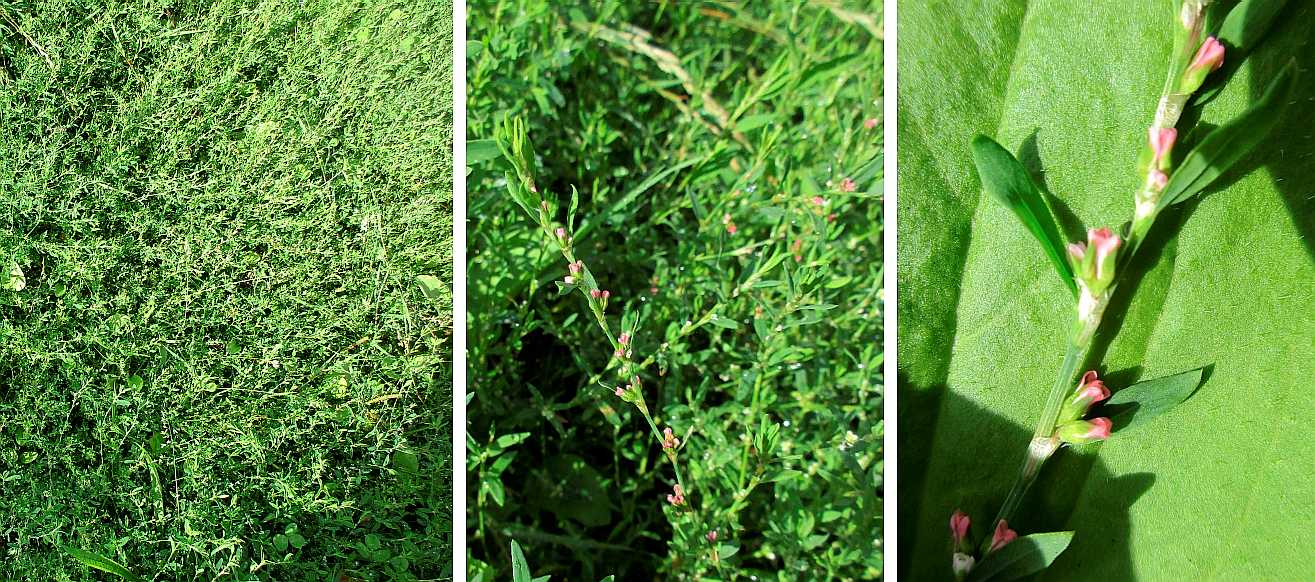 KNOTGRASS
KNOTGRASS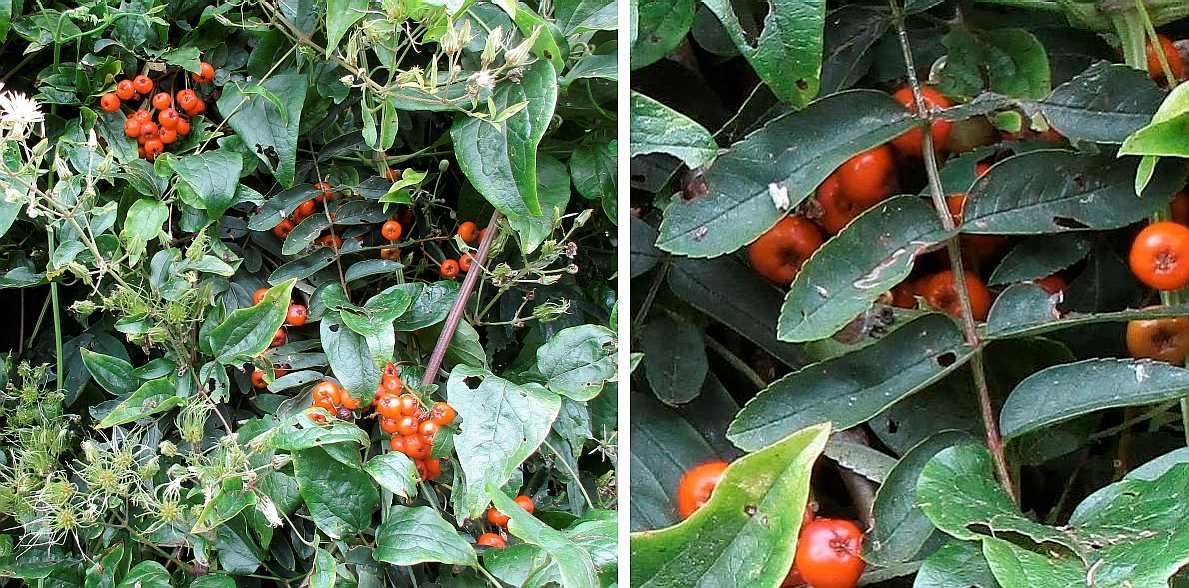 ROWAN
ROWAN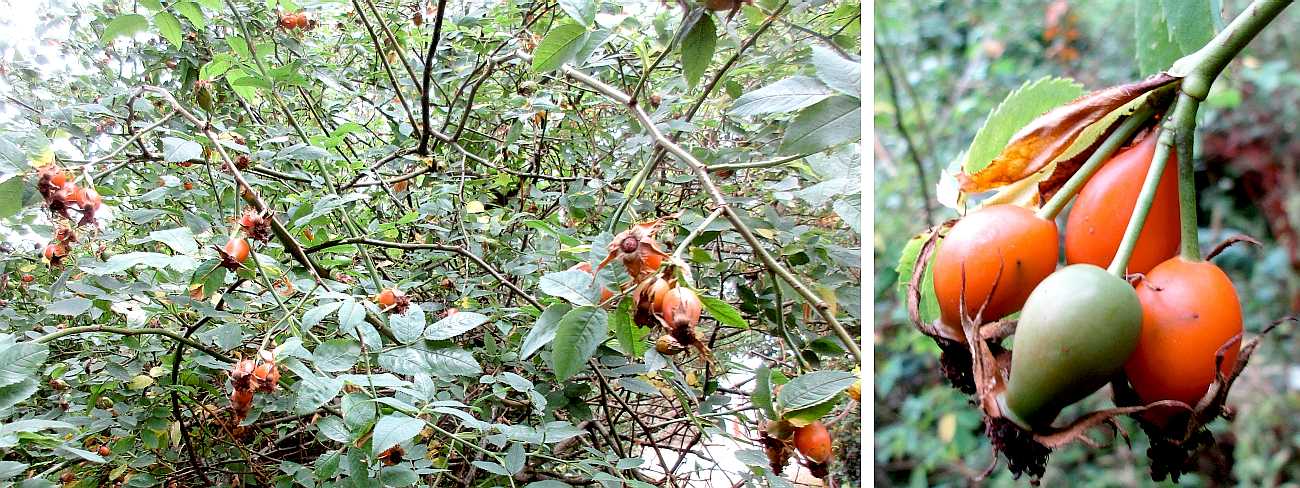 HIPS
HIPS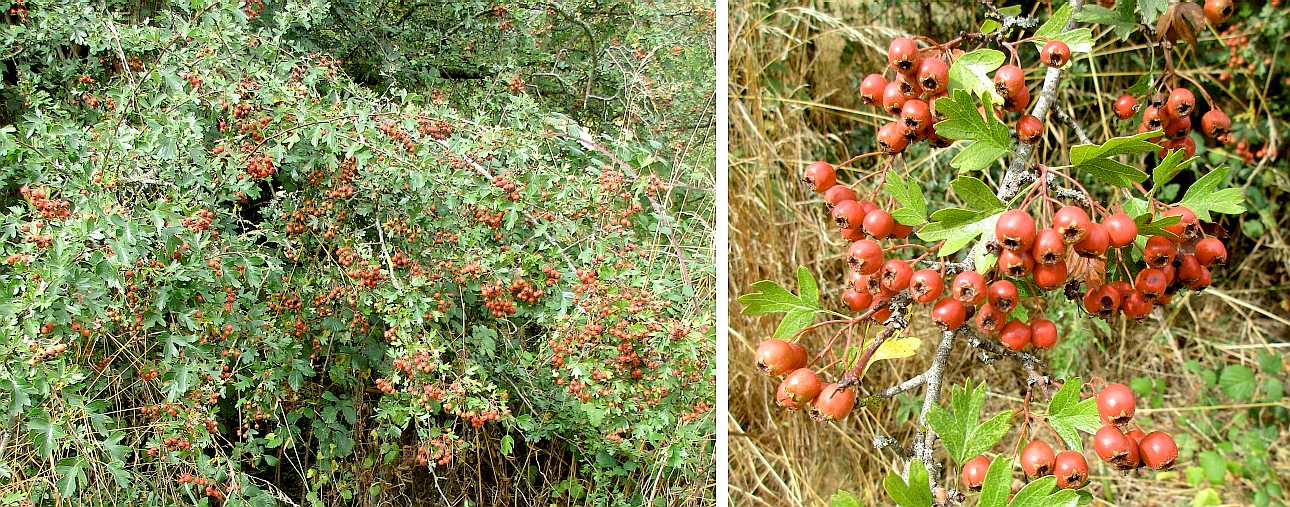 HAWS
HAWS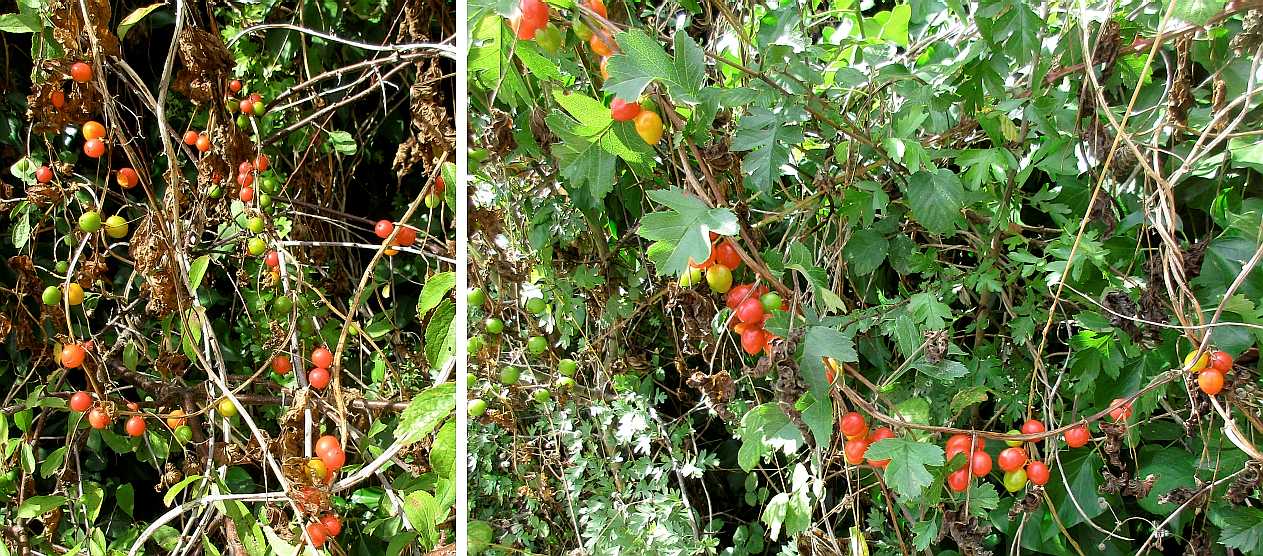 BLACK BRYONY
BLACK BRYONY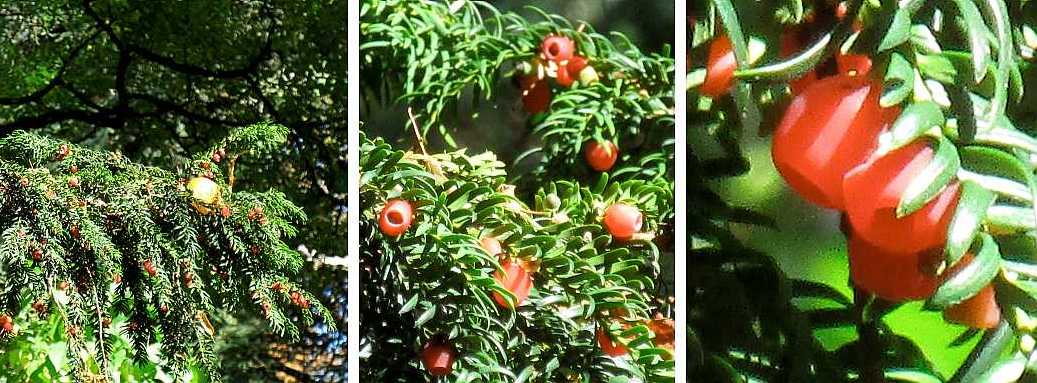 YEW
YEW SPINDLE TREE
SPINDLE TREE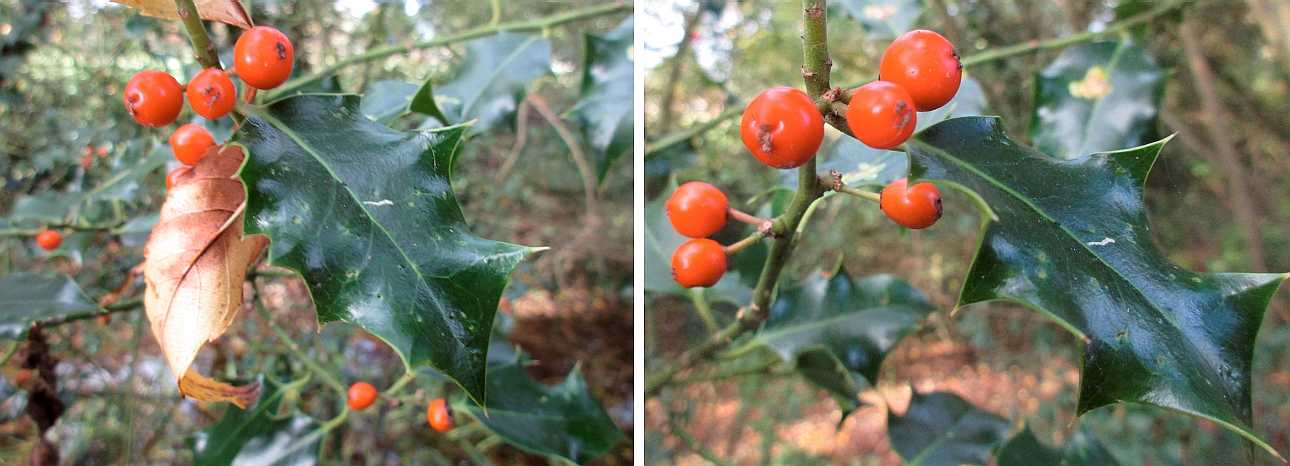 HOLLY
HOLLY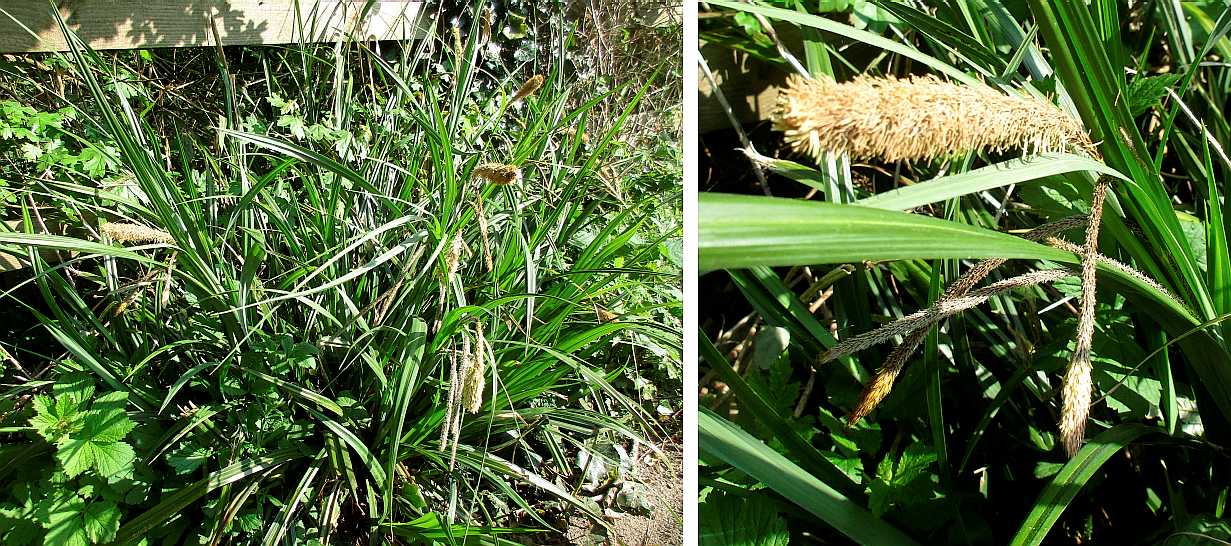 LESSER POND SEDGE
LESSER POND SEDGE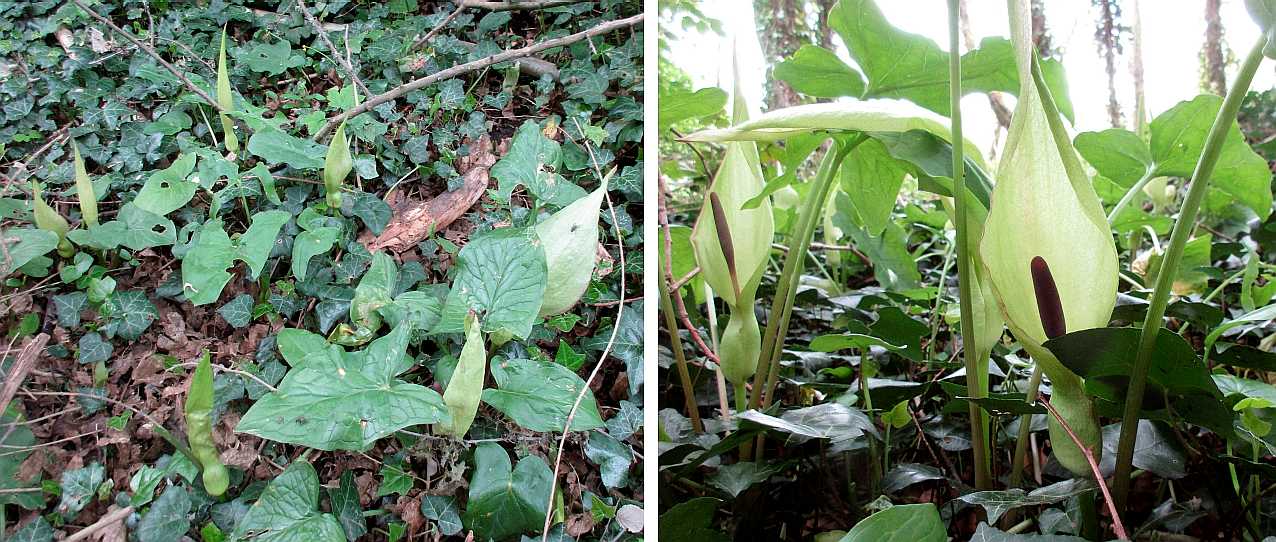 CUCKOO-PINT
CUCKOO-PINT MINER INFESTATION
MINER INFESTATION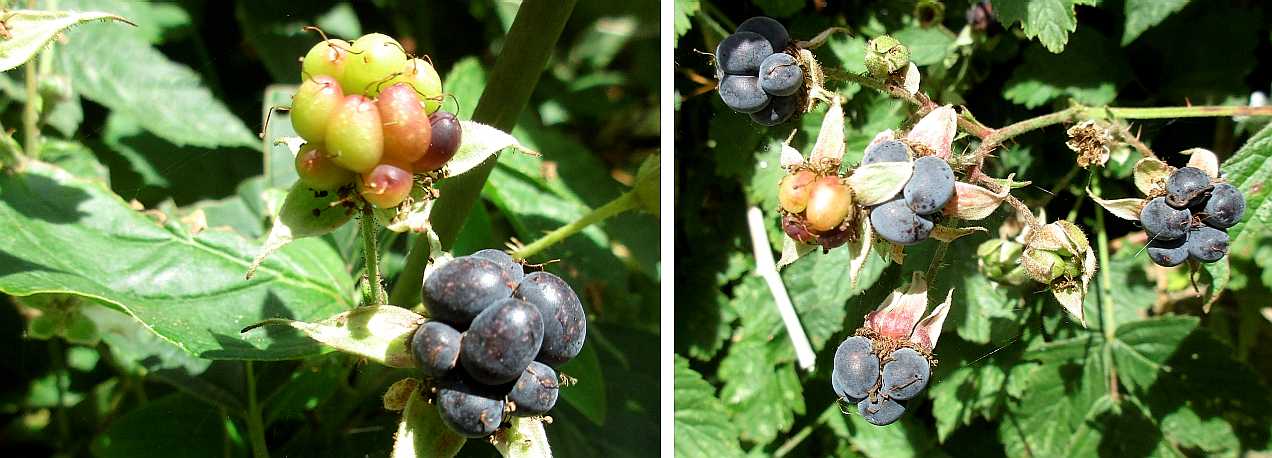 DEWBERRY
DEWBERRY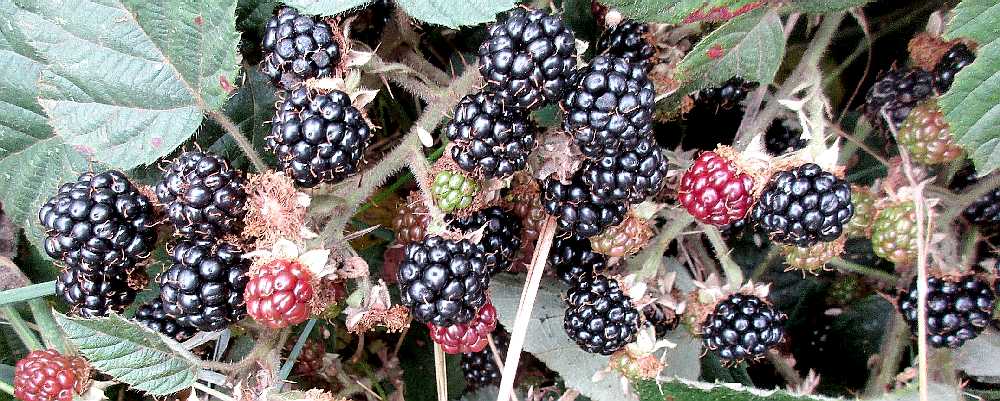 BLACKBERRY
BLACKBERRY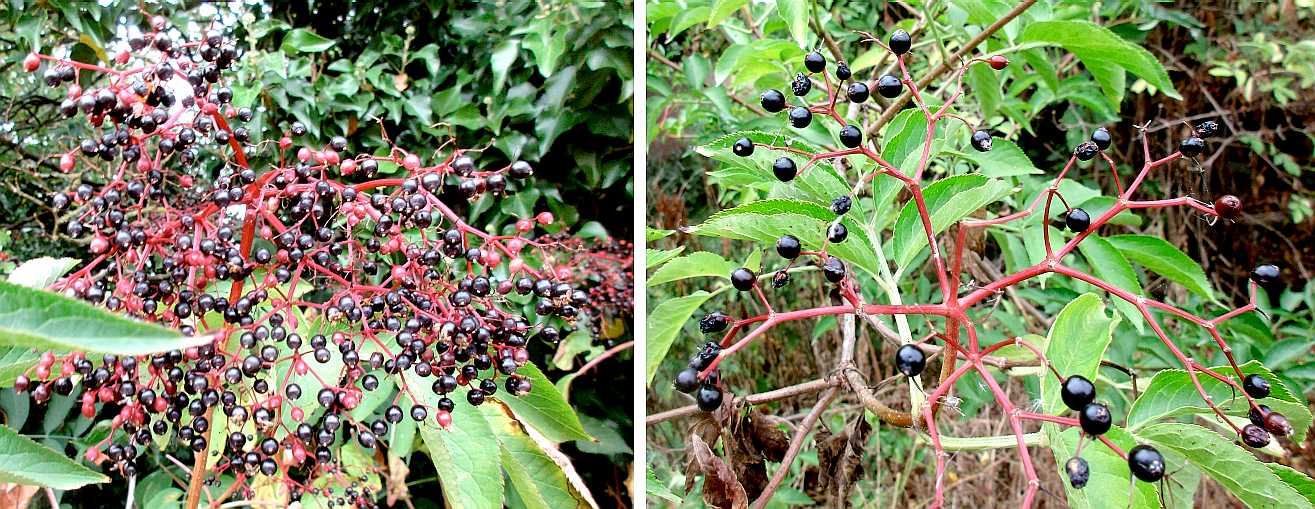 ELDERBERRIES
ELDERBERRIES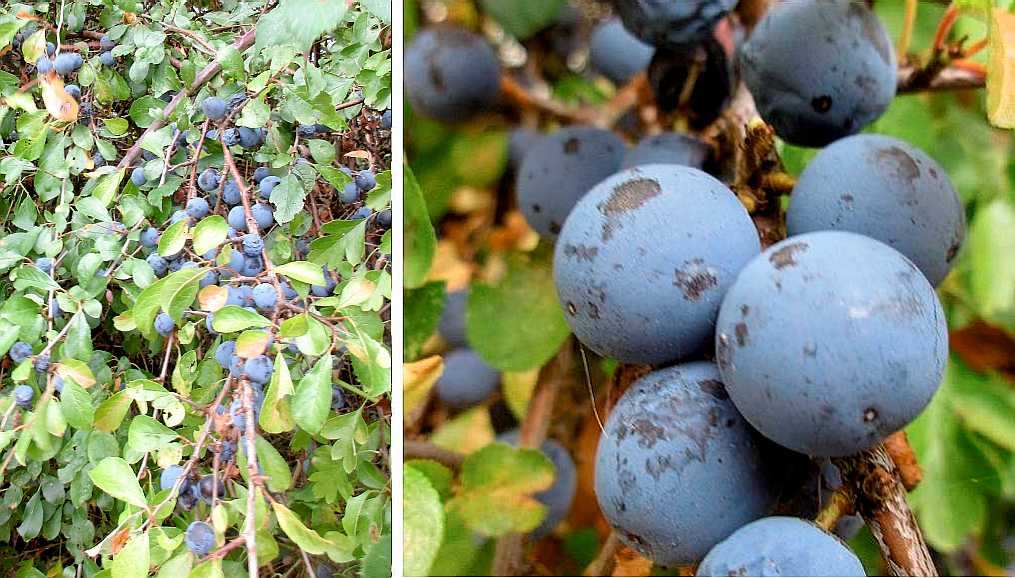 SLOES
SLOES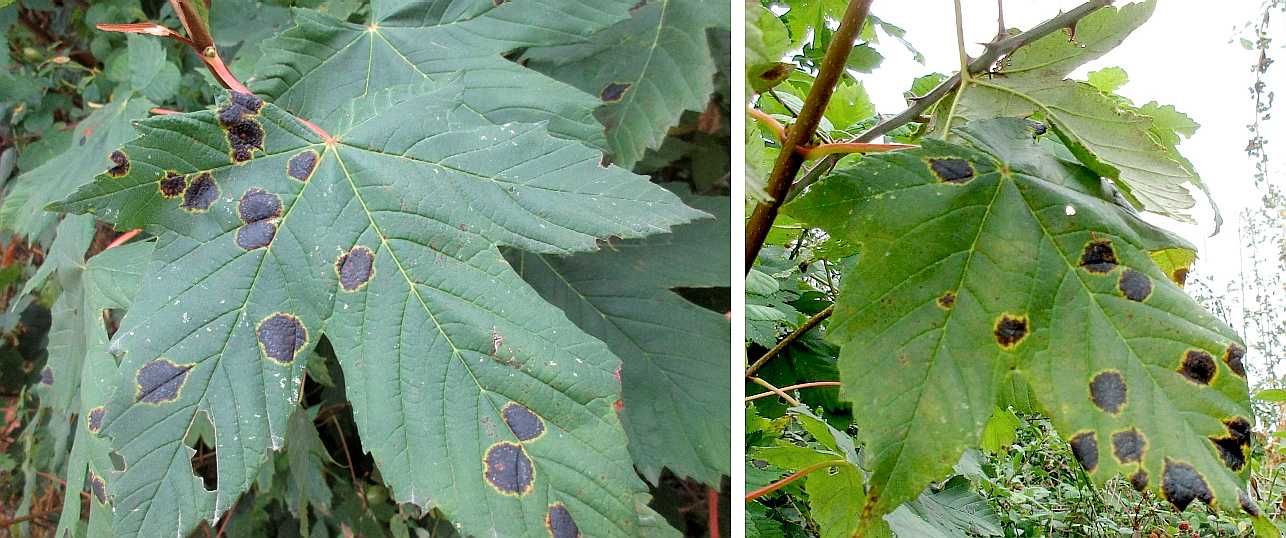 TARSPOT
TARSPOT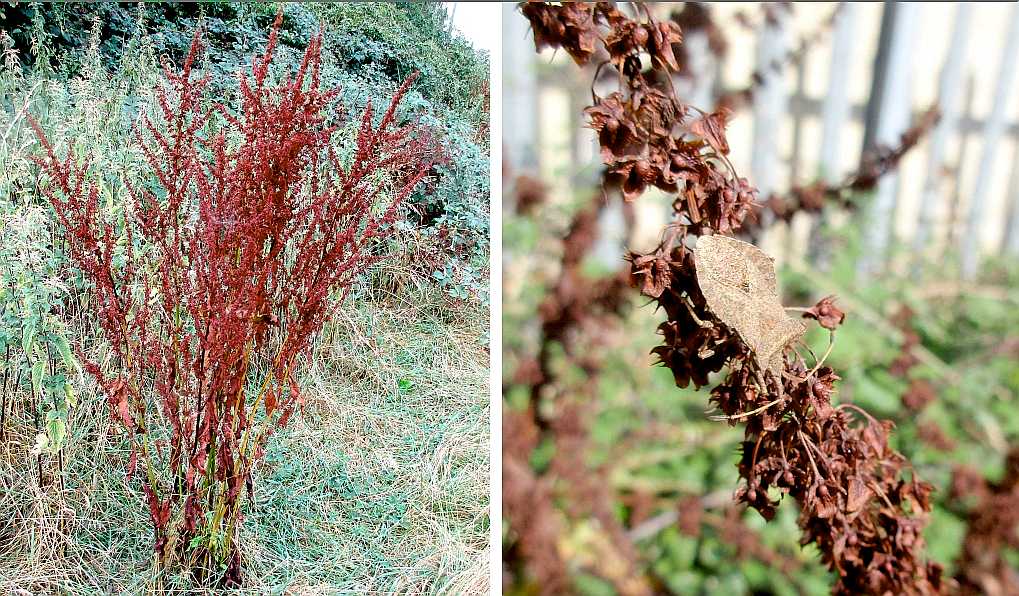 BROAD-LEAVED DOCK
BROAD-LEAVED DOCK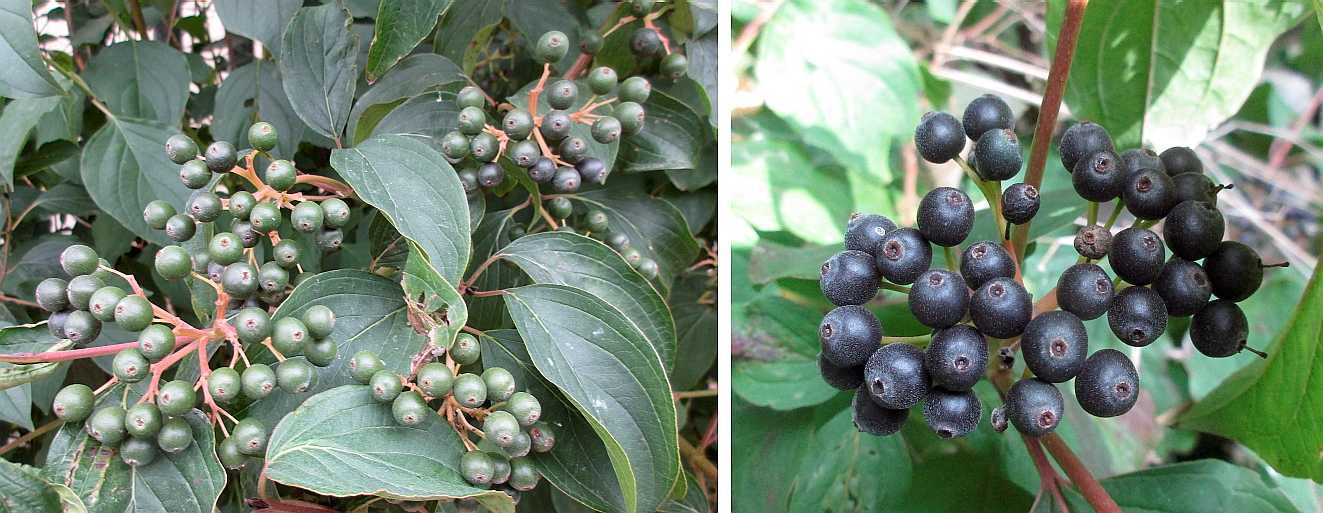 DOGWOOD
DOGWOOD WAYFARING TREE
WAYFARING TREE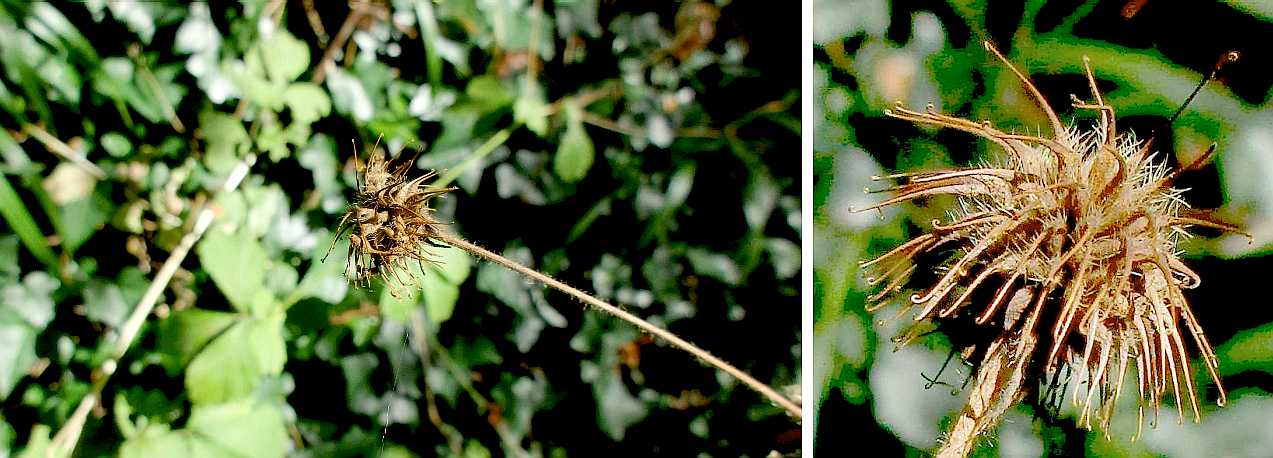 WOOD AVENS
WOOD AVENS IVY
IVY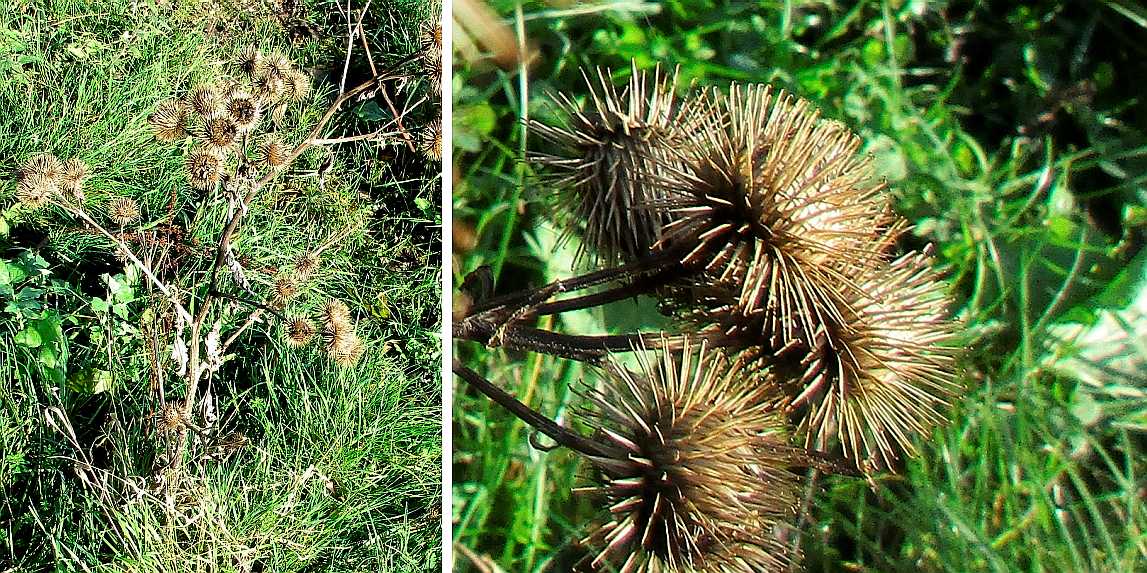 BURDOCK
BURDOCK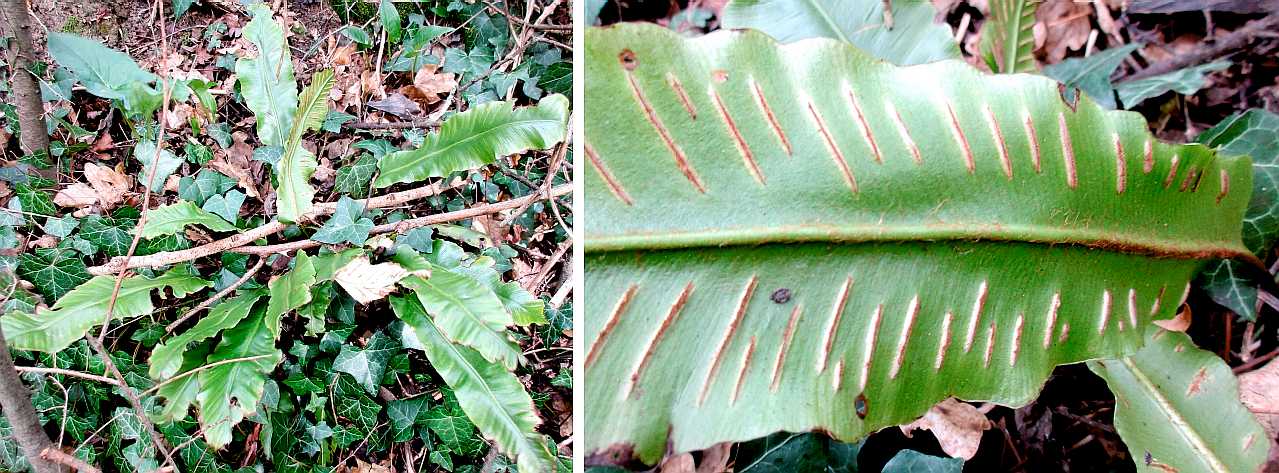 HART'S TONGUE FERN
HART'S TONGUE FERN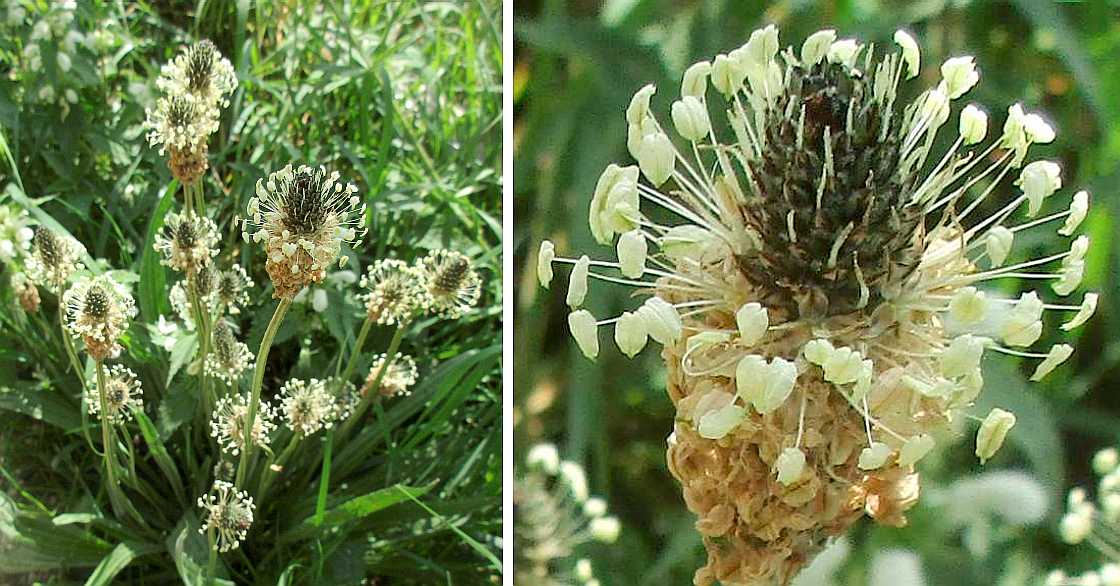 RIBWORT PLANTAIN
RIBWORT PLANTAIN STINGING NETTLE
STINGING NETTLE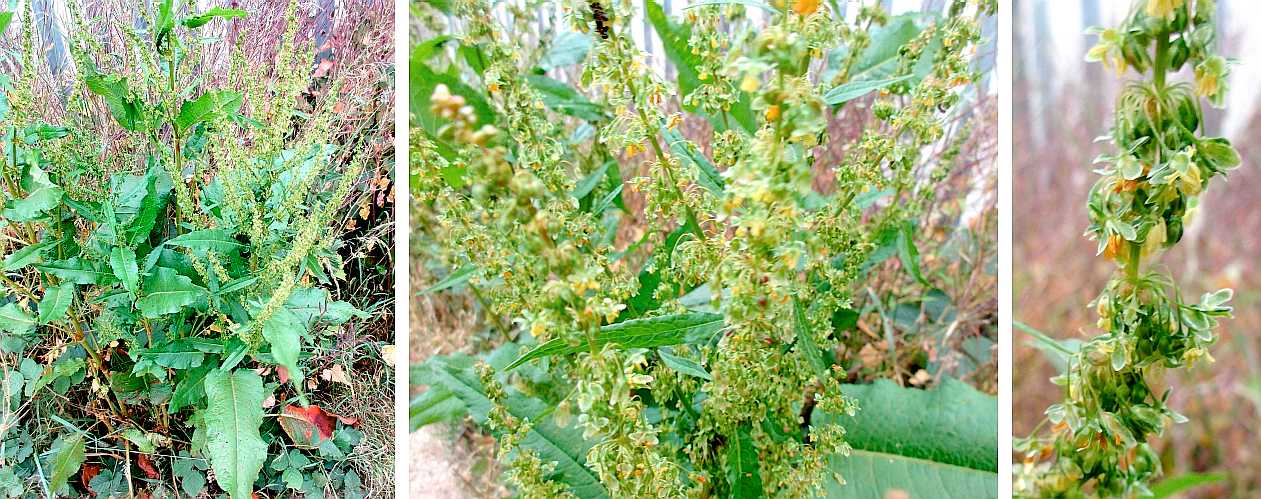 BROAD-LEAVED DOCK
BROAD-LEAVED DOCK BLACK BRYONY
BLACK BRYONY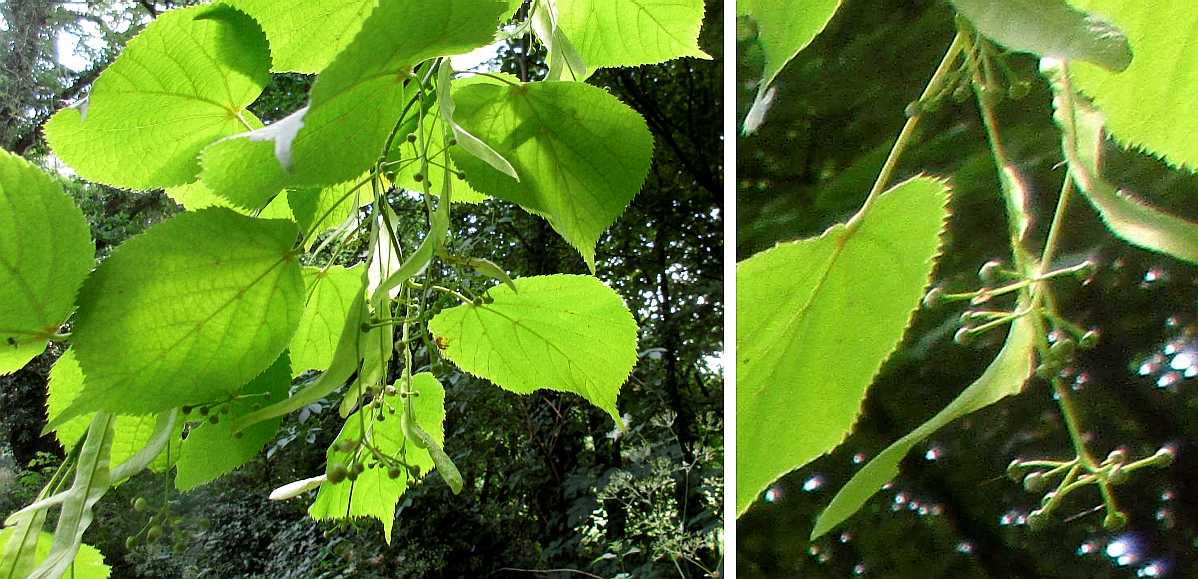 LIME
LIME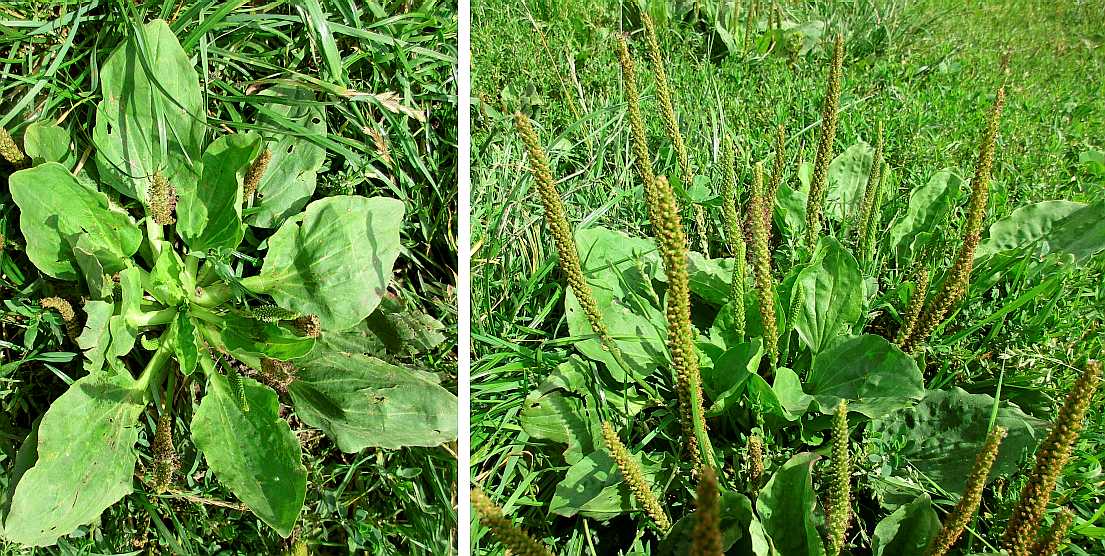 GREATER PLANTAIN
GREATER PLANTAIN IVY
IVY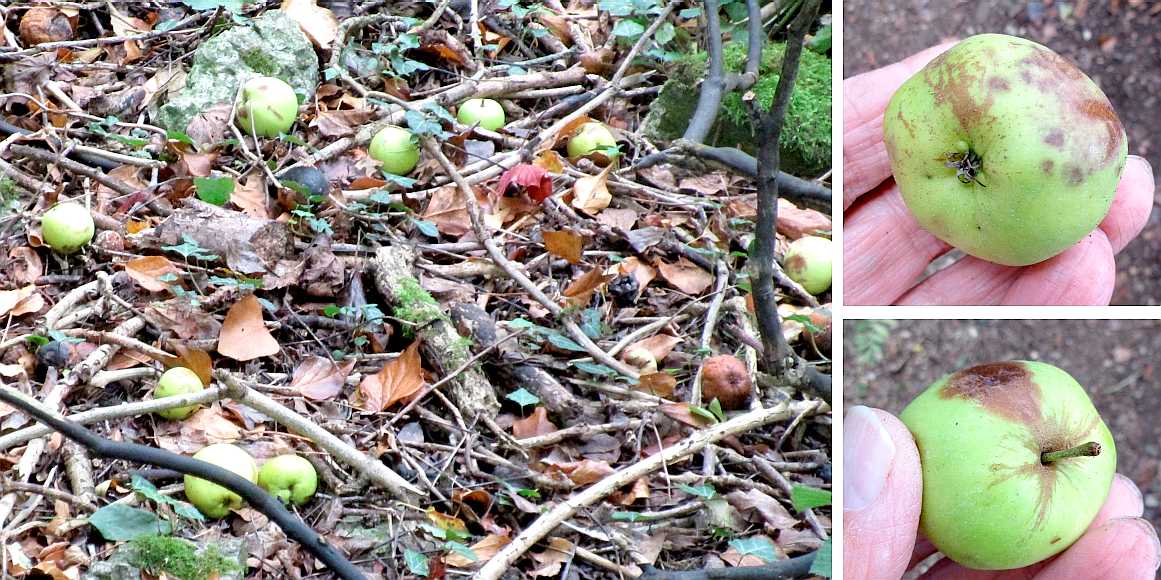 CRAB APPLE
CRAB APPLE